|
If you are looking to dazzle your palate, celebrate a special occasion, or seek something beyond the usual wine gift this holiday season, consider these wines. And yes, they are pricey. However, if it is within your budget, these wines are worth exploring and will surely impress the discerning palate. Château d’Esclans Garrus 2020 This luxury cuvée is made in the heart of Provence, France, and it is considered Château d’Esclans’ finest wine. The estate refers to it as “the essence of 100-year-old vines.” It is a blend of Grenache, Vermentino and Syrah. The grapes are sourced from a single vineyard of 100-year-old vines, with fermentation and aging taking place in large French oak barrels. Nose: Beautiful notes of floral, peach, berries, and spice. Palate: Lush, ripe red berries, white stone fruit, vibrant acidity, and a hint of minerality. The finish is long, with baking spice, vanilla, and a touch of citrus lingering. Magnifique! Alcohol: 14% SRP: $110 Pairing suggestions: Enjoy as an aperitif or serve with appetizers, seafood, grilled chicken, Ceviche, goat cheese salad, creamy pasta, or grilled vegetables. Famiglia Pasqua Mai Dire Mai Amarone della Valpolicella DOCG 2012 Pasqua Vigneti é Cantine, established in 1925, is located in Verona, Italy. In 2019, I met with third-generation Ricardo and Alessandro Pasqua for an informative and delightful lunch and wine tasting. Included in the tasting was the 2011 Famiglia Pasqua Mai Dire Mai Amarone della Valpolicella DOCG, an unforgettable experience! So, I was very excited when I recently received the 2012 vintage! This wine is a blend of 65% Corvina, 15% Corvinone, 10% Rondinella, and 10% Oseleta. The grapes are hand-harvested and dried in crates for four months. Aging occurs in new French oak casks (70% barrels of 225 liters and 30% 500 liters) for 24 months. Nose: Heady aromas of plum, dark cherry, earth, spice, oak, and cocoa beans. Palate: Aromas segue onto the palate of this complex and opulent wine. Dark fruit merges with baking spice and dark chocolate for a rich, silky, well-balanced wine. The finish is long and elegant. Alcohol: 16.5% SRP: $113 Pairing suggestions: Aged cheese, grilled meat, stews, risotto, and dark chocolate desserts. To learn more about Pasqua, click on the menu at right. (Please note some stats and info have changed since the 2019 article was published.) M by Michael Mondavi Napa Valley Red Blend 2018 The new label on this bottle is a “stop-in-your-tracks” stunner. And what is inside is superb! This wine is a blend of 60% Cabernet Sauvignon, 20% Cabernet Franc, 16% Merlot, and 4% Petit Verdot sourced from a select block within volcanic hillside vineyards sitting on top of Atlas Peak. The vineyards for M by Michael Mondavi Family are sustainably farmed with a focus on biodiversity, allowing each vineyard block’s unique attributes to shine through. Michael’s son, head winemaker Rob Mondavi, Jr, crafts M by Michael Mondavi to “express the balance personified by the great Bordeaux houses, while embracing the rich opulence and plushness of Napa Valley.” Winemaker Sabrina Massola brings her expertise to the blend, inspired by Michael’s palate and guidance. The wine is aged in 60% new French oak for 20 months. Nose: Floral, dark berries, blueberries, plum, baking spice, and herbs set the stage for this rich wine.
Palate: Dark cherry, juicy plum, berries, a touch of violet, and a hint of forest floor, with complexity and fine tannins. The finish goes on forever. This is a seductive and luxuriant wine. Alcohol: 14.5% SRP: $200 Pairing suggestions: Roasted meats and stews, mushroom risotto, hearty soups, seared tuna, or roasted duck. One doesn’t need to deplete their bank account to enjoy a bottle of wine. There are many excellent wines for under $30. However, there are times when one might feel like splurging, and these three wines are a delicious option for those “sumptuous” urges! Until next time… Cheers! Penina To leave a comment or if you have an inquiry, please contact me at [email protected] This month brings treats from Côtes de Bordeaux! Château Biac is a stunning estate overlooking the Garonne River in Cadillac Côtes de Bordeaux. The estate’s origins date back to the 17th century and has passed through several hands over the years. Today it is owned by the Asseily family, who purchased the property in 2006 I had the pleasure of visiting Château Biac a few months ago, and an article about this delightful family and their impressive wines will be coming soon! In the meantime, let me tease you with their sweet wine and a paired recipe straight from Youmna Asseily’s kitchen. Secret de Château Biac 2012 “Secret de Château Biac is the summer song of the vineyard: the tune you hum when you are happy….” Château Biac This seductive sweet wine is made with 99% Semillon, and 1% Sauvignon Blanc harvested from the estate vineyards where they practice sustainable viticulture. It is made in the traditional Sauternes method and aged 14 months in French oak barrels. Nose: Floral notes, apricots, white stone fruit, sweet spice, vanilla. Palate: An elegant wine with spiced apricot, honey, white peach, cinnamon, and a hint of pear. Alcohol: 13% SRP: $89 Serve chilled. Youmna recommends pairing the wine with this delectable soufflé. Soufflé Au Fromage
Ingredients for four servings: 45 g butter (1.6 oz) 30 g flour (1/4 cup) 300 ml milk (10 oz) Salt and freshly ground pepper Pinch of grated nutmeg 1 tablespoon of Dijon mustard 4 egg yolks 6 egg whites 75 g grated cheese (2.6 oz) 1 tablespoon grated cheese *The best cheese for this soufflé is a mixture of Parmesan (1/3) and tangy Emmenthal (2/3) Instructions: 1.25 litre capacity soufflé dish (5.2 cups) Butter the soufflé dish well; sprinkle with plain breadcrumbs. Melt the butter in a saucepan, stir in the flour, cook until foaming, and pour in the milk. Bring the sauce to a boil, stirring; season with salt, pepper, and nutmeg and simmer for 2 minutes. Take the pan from the heat, stir in the mustard, and beat the egg yolks into the hot sauce, so it thickens. Let it cool slightly, stir in the grated cheese, and taste for seasoning. The mixture should be highly seasoned. The soufflé can be prepared 3-4 hours ahead up to this point. Rub the surface of the cheese mixture with butter. To finish soufflé, set the oven to very hot, 400º. Whip the egg whites until stiff. Heat the cheese mixture until it is hot to the touch. Do not heat too much, or the cheese will cook into strings. Add about a quarter of the egg whites and stir until well mixed. Add this mixture to the remaining egg whites and fold together as lightly as possible. Pour the mixture into the prepared soufflé dish and smooth the surface. Sprinkle with the tablespoon of cheese and bake in the heated oven for 30 – 35 minutes or until the soufflé is puffed and brown. (it is better to check it after 20 minutes and then every 5 minutes until you are sure of your oven; of course, leave the oven door closed. This wine and recipe are perfect for the upcoming holidays and all year round! Bon Appétit and Cheers! Penina To leave a comment or if you have an inquiry, please contact me at [email protected] When one thinks of wine from Bordeaux, it is often the Left Bank with its famous châteaux and many high-priced wines. However, another renowned winemaking region in Bordeaux is the Right Bank, and one to keep an eye on. Although the Right Bank is famous for its Pomerol and Saint-Émilion appellations, there is another wine region to explore here, the Côtes De Bordeaux. It, too, has its centuries-old history, impressive and historic châteaux, and fortresses. Yet, these palate-pleasing and easy-drinking wines are more wallet-friendly and offer some of the best values for quality wine in Bordeaux! Some of the oldest wine areas in Bordeaux exist in this rural region with its gently rolling hills and fields of endless vineyards. The Left and Right Bank are separated by the Gironde Estuary that splits into the Dordogne and Garonne rivers. From the air, it looks like an upside-down” Y” with the Right Bank to the north and right of the Garonne River and the Left Bank to the south and left of the Garonne River. Bordeaux has approximately 111,200 hectares of vineyards and is France’s largest AOC. And at the “heart and soul” of this AOC is Côtes De Bordeaux, comprised of five appellations and over 12,000 hectares (97% planted to red) which is roughly 13% of the Bordeaux vineyard area. The appellations are Blaye Côtes de Bordeaux, Cadillac Côtes de Bordeaux, Castillon Côtes de Bordeaux, Francs Côtes de Bordeaux and Sainte-Foy Côtes de Bordeaux. With over 950 producers here, there is a lot of diversity geographically and in the wine. The Union des Côtes de Bordeaux was formed in 2007 and has grouped these five appellations under one banner called the AOC Côtes de Bordeaux. Its mission is to “improve product recognition by putting the name of the terroir “Blaye, Cadillac, Castillon, Francs or Sainte-Foy” before the common family name “Côtes de Bordeaux,” thereby promoting the personality and typical character of each of the wines.” In 2009, the new AOC “Côtes de Bordeaux” was officially born. Many small family-owned estates in Côtes de Bordeaux date back countless generations. Most embrace sustainability and practice biodiversity, biodynamic and organic farming with an ever-present eye on climate change. A young and enthusiastic new generation, both women and men, are bringing fresh and creative ideas to improve production with new methods and techniques that benefit the grape journey from the vineyard to bottling while working alongside the older generations and never losing sight of respecting and maintaining tradition. Principle Grape Varieties of Côtes de Bordeaux (slideshow photos credit: Penny Weiss) Red: Merlot Cabernet Sauvignon Cabernet Franc Petit Verdot Malbec Carménère White: Sauvignon Blanc Semillion Muscadelle Sauvignon Gris Below is an overview of the five appellations, which all benefit from the proximity to the Atlantic Ocean, Gironde Estuary, and the Dordogne and Garonne rivers. (slideshow photos credit: Penny Weiss) Blaye Côtes de Bordeaux This is the largest of the five appellations located on the Gironde Estuary, covering 6500 hectares. The majority of vineyards are cultivated on hillsides benefiting from ample sunshine conditions with a primarily temperate climate and a maritime influence. These fruit-forward wines also benefit from the rich terroir, with mostly clay-limestone soil around the town of Blaye. To the north, sand and gravel are suitable for Sauvignon Blanc, and more varied soils are in the southeast. Each estate is about 15 hectares, and red wine production dominates. Castillon Côtes de Bordeaux Castillon is the second largest appellation with approximately 2300 hectares, and the average estate is 10 hectares. The soils and climate differ from the other appellations, with more gravelly soils near the Dordogne river, clayey at the foot of the hillsides that become a mix of clay and limestone, and finally, limestone on the mountain plateaus. Vineyards benefit from a privileged geographical location with a south-facing exposure and an uneven altitude of more than 100 meters. The climate is oceanic and oriented toward a Continental-trend. These fruit-driven wines with soft tannins are similar to their neighbor Saint-Émilion as they share the same limestone plateau. Cadillac Côtes de Bordeaux As you can see from the map above, Cadillac, pronounced “kad-e-yak,” is an elongated band that follows the Garonne River. With approximately 2200 hectares in this appellation, the average estate has 11 hectares. This is a red-only appellation with Merlot dominating, and it is one of the only Bordeaux appellations that require bottling at the château. The terroir consists of calcareous soils covered with gravelly stones on the summits, clay-limestone in the middle of the slope, and fine gravel mixed with silica at the foot coasts. The Garonne River contributes to the uniqueness and well-structured wines of Cadillac Côtes de Bordeaux, thanks to the local temperate climate that it generates. Francs Côtes de Bordeaux Francs is a small appellation with approximately 435 hectares and some of the highest altitudes in Côtes de Bordeaux. The average estate has 10 hectares. Although red wines dominate, Francs also produces white and sweet wines from botrytized grapes. As with Castillion, Francs has a common bond with its neighbor, Saint-Émilion, as they share fossil-rich limestone-clay soil. It is a dry and harsh continental climate in winter and warm in summer, with vineyards to the east on high sunny hillsides, making it ideal for grape-growing. Sainte-Foy Côtes de Bordeaux This is the smallest appellation, with approximately 350 hectares and about nine hectares per estate. This appellation, along with Francs, produces primarily red in addition to white and sweet wines. It is a diverse appellation with deep soil of mostly clay soil limestone, as well as river edge gravel. This appellation benefits from a fairly temperate climate with a continental trend. To repeat, “the wines of Côtes de Bordeaux offer some of the best values for quality wine in Bordeaux.” The reds are fresh, fruit-forward, elegant, rich with juicy fruit, round, and structured. The whites tend to be dry, fruity, and lively, with hints of tropical notes while developing depth over time. And sweet wines are elegant, fresh, and perfectly balanced with acidity and richness. Many of these wines have good aging potential but are ready to drink now. They can be enjoyed as an aperitif or served with your favorite food. All of the wines that I tasted are very food-friendly! (slideshow photos credit: Penny Weiss) So, the next time you want to drink Bordeaux wine, think “right” and make Côtes de Bordeaux your go-to wine! Your palate and wallet will thank me!
I will explore a few Cotes de Bordeaux wineries in the coming weeks. Stay tuned! Until next time… Cheers! Penina To leave a comment or if you have an inquiry, please contact me at [email protected] Many tend to drift toward white or rosé wines as the temps begin to climb. However, red wines should not be overlooked during the summer months. Many light-bodied to full-bodied reds are ideal for sipping outdoors while enjoying grilled fare. For instance, unoaked or lightly oaked red wines tend to be lighter and fruitier. And slightly chilling many red wines for no more than 30 minutes can enhance the flavors, minimize the focus on alcohol, and make the wine more refreshing. I recommend staying below 14% in alcohol content when choosing a wine to drink outside on a hot day. Alcohol is a diuretic that contributes to dehydration. And when combined with outside heat, which leads to sweating, one can become dehydrated quickly. Therefore, it is also essential to drink water and stay hydrated! I have chosen five red wines that range from 12.5% to 13.5% alcohol and can be enjoyed with whatever is sizzling on the grill. These wines pair beautifully with grilled red and white meats, game, fowl, tuna, and veggies. And if it’s too hot outside, bring your picnic and wine indoors, and sip away! Trapiche Oak Cask Wines Trapiche Winery is located in Mendoza, Argentina. Grapes for this collection are sourced from vineyards situated 2500 ft above sea level. The wines are aged for nine months in oak barrels. Trapiche Oak Cask Cabernet Sauvignon 2021 This wine is 100% Cabernet Sauvignon. Nose: Dark berries, cherries, and spice. Palate: Ripe blackberry, plum, spice, chocolate, and toasty notes with smooth tannins. Nice finish with a hint of tobacco lingering. Alcohol: 13.5% SRP: $8.99 Trapiche Oak Cask Malbec 2021 This is 100% Malbec wine. Nose: Dark cherry, plum, spice, and vanilla. Palate: Ripe dark berries spill onto the palate with a creamy mouthfeel and notes of pepper on a sweet finish. Alcohol: 13.5% SRP: $8.99 Saget La Perrière Saget La Perrière is a family-run company located in the Loire Valley, France. With 890 acres of vines in the finest appellations and six estates, it carries on the tradition of nine generations dedicated to producing the best wines. La Petite Perrière Pinot Noir 2020 This 100% Pinot Noir is mainly sourced from the Saget family’s estate vineyards in Touraine (Loire Valley), and part of the blend is sourced from the South of France through long-term partners. Nose: Cherry, floral, earthy Palate: Blueberry, dark plum, cherry, and balanced acidity with a fruity and long finish. Alcohol: 12.5% SRP: $13.99 San Felice San Felice estate is located in the heart of Chianti Classico territory in Tuscany, Italy. The estate covers an area of more than 650 hectares in the municipality of Castelnuovo Berardenga, at an altitude of about 400 meters above sea level. Over 140 hectares are devoted to wine vineyards, with about 17,000 olive trees, experimental plantations, and a hotel complex. San Felice Il Grigio Chianti Classico Riserva DOCG 2018 Grapes for this 100% Sangiovese are sourced from the San Felice estate. 80% of the wine is aged for 24 months in 60 or 90 hectoliters in Slavonian oak casks, and 20% is aged in 225-liter French barriques, followed by nine months or so in the bottle. Nose: Floral, red berries, dark cherry, and earth. Palate: Fresh red fruit spills onto the palate with spice, floral, a hint of herbs, and a lovely balance of acidity and smooth tannins. Alcohol: 13.5% SRP: $27 J. Christopher Winery This winery is located in northern Willamette Valley, Oregon, and is owned by well-known winemaker Erni Loosen, creator and owner of Germany’s Dr. Loosen and Villa Wolf estates. Following his passion for Pinot Noir, Erni set his sites on J. Christopher, eventually purchasing 40 acres and planting the Appassionata Vineyard. J. Christopher Medici Vineyard Pinot Noir 2018 The grapes for this 100% Pinot Noir are sourced from one of the oldest vineyards in the Chehalem Mountains appellation, and it is just a few miles east of the winery. The oldest blocks were planted in 1976, and in 2015 the vineyards were converted to organic farming. This wine was aged 18 months in barriques (25% new) and is unfiltered. Nose: Strawberry, floral, stone, and a trace of baking spice. Palate: Succulent red berries, cherry, vibrant minerality, and spice. Smooth and well structured with a long finish. Alcohol: 13.5% SRP: $60 In addition to the above wines, Grenache, Cabernet Franc, and Gamay make excellent grilling partners. Until next time…
Cheers! Penina To leave a comment or if you have an inquiry, please contact me at [email protected] Whether celebrating Easter, Passover, or a “just because” moment, I have a few wines and recipes to grace your table and please your palate. Easter Jean-Luc Colombo Cornas “Terres Brûlées” 2018 Jean-Luc Colombo winery is located in the northern appellation of Cornas in the Rhône Valley, France. Cornas is the smallest appellation in the Rhône Valley, consisting of approximately 325 acres, and is dedicated to producing only red wine from the Syrah grape. The Mediterranean climate and decomposed granite soils contribute to the richness and character of these wines. Terres Brûlées means “burnt earth,” which refers to the long hot days balanced by the cool nights. Grapes for this 100% Syrah are hand-harvested from 30+ -year-old vines. The wine is aged 21 months in oak barrels (10% new, 90% one-to-five-year old barrels). Nose: Dark cherry, dark berries, plum, and baking spice. Palate: Rich with blackberry, plum, and black cherry, reminiscent of exotic jam. Notes of vanilla, cocoa, spice and a trace of minerality linger on a long finish. An exceptional wine! Alcohol: 14.5% SRP: $63.99 Pairings: Roasted white meat, game, lamb, seared tuna, and hearty stews. I was seven years old the first time I tasted lamb and after that I insisted that my mother make lamb chops for me at least once a week. Seven years later, our family was invited to a traditional Greek Easter meal where I feasted on leg of lamb for the first time. I was hooked! Roasted Leg Of Lamb With Vegetables (serves 8 to 10) The beauty of this recipe is that you can add any vegetables you like to the pan. My favorites are small potatoes, baby carrots, and onions. Ingredients: One 5 to 6 pound trimmed bone-in leg of lamb 4 to 5 garlic cloves minced One tablespoon of olive oil Chopped fresh parsley, thyme, rosemary (a tablespoon of each) One tablespoon of Dijon mustard Kosher salt and pepper to taste. Cut up veggies such as new potatoes, carrots, zucchini, and onions. Directions: Line a large roasting pan with aluminum foil and preheat the oven to 350℉. Pat lamb dry and using a sharp knife, score the top side of the lamb, making shallow cuts all over. Combine the rest of the ingredients in a small bowl. Place lamb fat side up on a rack in the prepared roasting pan. Spread the garlic mixture evenly over the lamb, making sure to rub it into the scored cuts. (I like to use my hands to rub the mixture into the lamb.) Add a small amount of dry white wine to the bottom of the pan, and then add cut-up vegetables of your choice. Place pan in preheated oven and roast until it reaches an internal temperature of 135℉ or until desired doneness. Occasionally baste the vegetables and add more liquid to the pan if necessary. Let rest 15 to 20 minutes before slicing. Note: Consult a chart for roasting time per pound to achieve doneness as to rare, medium-rare, etc. Passover Having sat through many family seders growing up, I endured the wine that was always served. It was a sickeningly sweet wine that managed to insult my palate even in my early youth. There had to be a better kosher wine! And over time, wine producers began making quality kosher wine. Alavida Malbec Organic and Kosher 2021 This 100% Argentine reserve-level Malbec is the latest release from Origins Organic Imports, owned by Anne Bousquet and her husband, Labid al Ameri. who also own Domaine Bousquet. They have been producing certified organic wines since 1997. This wine is USDA-certified organic and kosher, a first from Argentina. “Alavida” is a riff on “to life” in Spanish - itself a riff on the traditional Hebrew toast “L’chaim!”. Grapes for this wine are sourced from vineyards in the Andean foothills at 4000+ feet. 90% of the wine is aged in used oak and 10% in new oak. Nose: Dark cherry, dark berries, baking spice, earthy mushrooms, and floral. Palate: Aromas segue onto the palate with vibrant fruit, plum, smooth tannins, and a hint of fennel. Alcohol: 14.5% SRP: $19 Pairings: Charcuterie board, grilled or roasted meat, fowl, pasta, or veggie casseroles. Savory Passover Noodle Kugel (Serves 6 to 8) courtesy of 1,000 Jewish Recipes by Faye Levy This is a delicious kugel, unlike the sweet kugels you might be accustomed to. Ingredients: 8 oz. Passover noodles 4 to 5 tablespoons vegetable oil 2 large onions, chopped Salt and freshly ground pepper to taste 1 teaspoon paprika, plus a little more for sprinkling 2 large eggs, beaten Directions: Preheat the oven to 350℉. Cook noodles in a large pot of boiling salted water for about 3 minutes until almost tender. Drain, rinse with cold water, and then drain again. Transfer to a large bowl. Heat 3 to 4 tablespoons of oil in a large skillet over medium-low heat. Add onions and sauté for 15 minutes or until very tender and light brown. Add salt, pepper, one teaspoon paprika, and sauté for about 5 minutes or until well browned. Cool slightly. Stir onion mixture into noodles. Adjust seasoning; mixture should be seasoned generously. Add eggs and mix well. Oil a 2-quart baking dish and add noodle mixture. Sprinkle with the remaining tablespoon of oil, then dust with paprika. Bake uncovered for one hour or until set. Serve from the baking dish. Note: For a heartier kugel add sautéed mushrooms and/or broccoli. Just Because! Saget La Perrière Blanc Fumé De Pouilly 2018 Saget La Perrière is a family-run company located in the Loire Valley, France. With 890 acres of vines in the finest appellations and six estates, it carries on the tradition of nine generations dedicated to producing the best wines. More commonly known as “Pouilly Fumé,” the “Blanc Fumé de Pouilly” appellation is the original name of this 100% Sauvignon Blanc wine. Its classification is one of the oldest in France and goes back to 1937. The term “Blanc Fumé” (smoky white) refers to the thin smoke-colored layer covering the grapes at the time of harvest and the unique aromas of gunflint famous in the wines of Pouilly sur Loire. This wine is aged on fine lees for six months, then bottled and aged for six to eight months in the cellar. Nose: Floral, citrus, minerality, and a hint of herbal. Palate: Floral notes continue with ripe fruit, grapefruit, flint, minerality, and lemon zest on the finish. It is fresh and lively! Alcohol: 13% SRP: $34.99 Pairings: Enjoy as an aperitif or serve with seafood, grilled chicken, goat cheese, or light appetizers. Scallops with Cannellini Bean Purée (serves two) Double or triple the recipe to make more servings. This recipe is done in three stages but is worth the time and effort.
1) Bean Purée Ingredients: 1/2 cup canned cannellini beans, rinsed and well-drained. 1 teaspoon unsalted butter Salt and freshly ground pepper to taste. Directions: Place drained beans and butter into a food processor fitted with a metal blade and process until smooth. Season with salt and pepper to taste, and process again for 30 seconds. 2) Coulis Ingredients: 1 red bell pepper, seeded and diced 1 tablespoon olive oil 1 clove garlic, finely chopped (about 1/2 teaspoon) Salt and freshly ground pepper to taste Directions: Combine diced pepper, olive oil, garlic, and a pinch of salt and pepper in a food processor. Blend until liquefied. 3) Scallops Ingredients: 2 tablespoons coriander 2 tablespoons mustard seed 2 tablespoons black peppercorns 2 tablespoons pink peppercorns 2 tablespoons olive oil 4 dry sea scallops 1/2 cup of baby greens Directions: Preheat the oven to 400℉ Combine all spices in a spice or coffee grinder and grind to a powder. Pour into a shallow bowl. Heat olive oil in a nonstick ovenproof skillet over high heat until it sizzles. Dip both sides of the scallops in the spice blend and place them into the skillet in a single layer. Sear for about 3 minutes per side or until golden brown. Transfer the skillet to the oven and heat for 5 minutes. Divide and scoop the white bean puree into the center of each dish, and arrange two scallops on top of each mound. Drizzle with red pepper coulis and garnish each plate with greens. Of course, one can enjoy these wines and recipes all year round! Until next time… Cheers and bon appétit! Penina To leave a comment or if you have an inquiry, please contact me at [email protected] It might be winter with lots of snow, ice, and frigid temperatures, but I’m enjoying a touch of spring with these fresh and vibrant wines from Languedoc! Languedoc and Roussillon, now known as the Occitanie region since 2016, is France’s largest wine-producing area located in southern France(approximately 584,400 acres). It extends from the Rhône valley in the east to the Spanish border in the southwest. Languedoc makes up about 90% of this region, with Roussillon occupying 10%. The wine styles reflect the climate and terrain, which vary with the location of the vineyards growing from the Mediterranean Sea to the mountainous terrain more inland. While this region offers red, white, rosé and sparkling wines, about 75% to 80% of the wine production is red, with Syrah, Grenache, Mourvèdre, Cinsault, and Carignan being the major players. The red wines are noted for being fruit-driven and full-bodied, with an emphasis on blends rather than single varietals. White grapes include Grenache Blanc, Picpoul, Vermentino, Viognier, and Bourbouelenc.
Most of Languedoc’s vineyards are located on coastal plains, and Roussillon vineyards lie in the foothills of the Pyrenees or on cliff tops. The vineyards experience a primarily Mediterranean climate with varying microclimates and soil composition. It is interesting to note that Languedoc is documented as one of France’s largest organic wine-growing regions. Here are three samples of what Languedoc has to offer. Domaine Reine Juliette Picpoul de Pinet ‘Terres Rouges’ 2020 Domaine Reine Juliette is a sixth-generation winery located on the Via Domitia in Pomerols on the Mediterranean coast. This wine is made from 100% Picpoul blanc grapes planted in red limestone gravel in vineyards situated in the Appellation of Protected Designation of Origin Languedoc “Picpoul de Pinet.” Fermentation takes place in stainless steel, with short aging in bottle before release. Nose: Floral, white stone fruit, melon, and citrus Palate: Dry and crisp with lemon, honeydew, white peach, minerality, and a touch of red ruby grapefruit on the finish. Alcohol: 13% SRP: $23 Pairing: Enjoy as an aperitif or serve with salmon croquettes, shellfish, or oysters. Terre Des Dames Le Rosé 2020 AOC Coteaux du Languedoc Terre Des Dames was purchased in 2002, but the estate’s originality shines through with its 100 -year-old vines and 18th-century buildings. This rosé is a blend of 40% Mourvèdre, 30% Grenache, and 10% Syrah. Grapes are sourced from small plots on different levels and are surrounded by ancient stone walls and wild garrigue. Nose: Floral, red berries, Palate: Fresh fruit, raspberry, strawberry, spice, minerality, and a hint of herbal. Crisp, dry, with subtle complexity, and quite delightful! Alcohol: 13% SRP: $21 Pairing: Enjoy as an aperitif or serve with light fare. Domaine La Madura ‘Classic Rouge’ 2018 AOP Saint-Chinian Domaine La Madura is located in Saint-Chinian appellation, with blocks of vineyards planted on a patchwork of very varied soils and altitudes that differ from one plot to another. The blend for this wine is 34% Grenache, 22% Carignan, 22% Mourvèdre, and 15% Syrah, with vines growing on slopes in varying soil types such as clay-limestone, sandstone, and schist. Aging of wine is in concrete vats and 3 to 10-year-old barrels for Syrah and Mourvèdre. Nose: Cherry, dark fruit, herbal notes, and earthy. Palate: This wine is fresh and sassy. Aromas segue onto the palate with silky tannins, anise, and minerality. Alcohol: 14% SRP: $22 Pairing: Grilled meat, stews, glazed duck, seared tuna, mushroom risotto, or hearty soups. The above wines are unique and expressive of Languedoc’s terroir. If you can’t travel to Languedoc right now, let your palate take you on tour. Even with lots of snow outside my window, I’m happy to sip these wines and let them take me to Languedoc for a visit. Until next time… Cheers! Penina To leave a comment or if you have an inquiry, please contact me at [email protected] What happens when three French wine-loving friends decide to produce a unique wine collection? An explosion of flavors in simple but sexy single-serve bottles happens. That’s what! Nicolas Deffrennes, Régis Fanget, and Valérian Déjours, long-time friends, got together, merged their ideas and passion for wine, and created Le Grand Verre. (LGV) (great big glass) Through the wonders of Zoom, I met Nicolas and Régis, along with winery owner Inèz Andrieu of Domaine Caylus and winemaker, Gérald Damidot of Château Val D’Arenc, and enjoyed tasting four of LGV wines. It all began with Nicolas, founder of LGV, whose “eureka moment” came to him when he was a member of a wine club while attending Harvard University. He gained so much knowledge and joy from tasting many different wines that he wanted to give other people the opportunity to experience what he did without opening an entire bottle. So, together with his friends Régis and Valérian, they set out on a mission with the focus of featuring small, independent boutique wineries with an emphasis on quality, organic and sustainable practices, and of course, designing a single-serve bottle for the wine. They toured through France, meeting with many estate owners and winemakers, sampling a lot of wine, and connecting with people. Nicolas said, “We looked for authenticity. The process of choosing winemakers is not just about finding wines that this beautiful little bottle deserves, but it is about the people and connection. It is the authenticity of relationships and products.” Most of the wines crafted for LGV are produced from female-owned estates or female winemakers. The recycled, shatter-proof bottle is double-layered PET that preserves the aromas and flavors. Nick said, “The two layers keep the wine fresh.” Régis added, “The design is elegant but pure and simple. You see the wine, not the bottle.” Each bottle holds 6.3 ounces of wine. LGV Domaine Caylus Rosé Blend 2020 Domaine Caylus is located in the Pays d’ Herault, in the Languedoc-Roussillion region. Inèz Andrieu is a third-generation owner and winemaker of the estate. She converted their 25-acre estate to organic farming in 1999, stressing the importance of preserving the land and lifestyle. The blend for this rosé is 60% Syrah and 40% Grenache from their certified organic vineyards. This wine has wonderful aromas of floral, red berries, and tropical fruit that carries over to the palate with strawberry, cherry, and cream. It is juicy and a delight to sip. Inèz says, “It is rich and concentrated.” And, I agree! Alcohol: 12.5% SRP: $24.99 for a 4-pack LGV Domaine Caylus Chardonnay 2020 This 100% Chardonnay is sourced from Domaine Caylus certified organic vineyards. Inèz said, “This is pure Chardonnay. No oak is used, and it is produced using minimal intervention.” The color is golden with a tinge of green. The nose offers floral, melon, and white stone fruit. Lush notes of white fruit, peach, lemon, and apple satisfy the palate. Just lovely! Alcohol: 13.5% SRP: $24.99 for a 4-pack LGV Château Val D’Arenc Bandol Rosé 2020 Château Val D’Arenc is located in Provence-Alpes-Côte d'Azur region in southeastern France. They have 25 hectares of organic vineyards thanks to the young and innovative winemaker, Gérald Daimidot, who arrived in 2015 and converted the entire estate to organic farming. With 20 years of winemaking experience, Gérald says, “I am a very passionate winemaker. I focus on choosing the best grapes and making food-friendly wines. And this wine is made to pair with gastronomic food.” Gérald takes wine and gastronomy very seriously and recently opened a restaurant! This rosé is a blend of 80% Mourvédre, 10% Grenache, and 10% Cinsault. The Mourvédre gives the wine its beautiful natural color. Aromas of fresh red fruit, melon, citrus and peach segue onto the palate with berries and spice notes. Gérald says, “This wine has a lot of texture and is spicy with pepper.” It also has a beautiful mouthfeel and a long finish. Alcohol: 13.5% SRP: $29.99 for a 4-pack LGV Château Peyredon Haut-Médoc Cru Bourgeois 2019 Château Peyredon is located in Haut-Médoc on the Left Bank in Bordeaux. It is owned by Stéphane & Laurence Dupuch. They are committed to organic farming and preservation of the land. This is a classic Bordeaux blend of 63% Cabernet Sauvignon and 37% Merlot. The grapes were sourced from over 100-year-old vines. The nose offers dark berries, baking spice, and a touch of earth. Juicy notes of dark berries, a hint of strawberry, and vanilla linger on the palate for a long finish. It is a fresh and elegant wine. Régis said, “This is a very fresh wine with succulent dark berries.”
Alcohol: 13% SRP: $29.99 for a 4-pack There are 20 wines in the LGV portfolio representing French regions such as Bordeaux, Provence, and Languedoc. The “trio amis” continue to explore vineyards throughout France and anticipate expanding their portfolio in the coming year. These are delicious wines in easy-to-transport bottles. They are available throughout the US and are sold in 4-packs ranging from $20 to $30. I’m looking forward to tasting more of these impressive wines. Seriously, where else can you enjoy premium French wines without having to open an entire bottle? Until next time… Cheers! Penina To leave a comment or if you have an inquiry, please contact me at [email protected] It doesn’t matter what time of year it is when it comes to sipping rosé wines. But, a chilled glass of rosé in hand during the warmer months is quite divine! The spring and summer seasons always bring stunning blooms bursting with an array of colors and seductive fragrances. Not to be outdone by mother nature, rosé wines are made in various styles, enticing aroma and alluring shades of pink. And the bottles tend to be beautiful as well. With so many choices on the market, one might be inclined to start a rosé garden! In its simplest terms, wine gets its color from the skin of grapes, and there are several methods of achieving this with rosé wine. Limited Skin Maceration Rosé wine is produced from red grapes with limited skin contact during maceration. After harvest, the grapes are crushed, and the juice is allowed time on the skins, which could be just a few hours or up to a week. The less time spent on the skins, the lighter the color of the wine will be. The longer the maceration, the darker and more flavorful the rosé will tend to be. After maceration, the juice is drawn off, and fermentation of the wine begins. Direct Press With this method, the grapes are pressed to remove the skins (such as with white wines), and juice is immediately drawn off, only allowing the juice to contact the skins for a very short time. This process produces some of the lightest-hued rosés. Winemakers often use this method for darker-skinned grapes. Saignée Method This method is also referred to as the “bleeding” method. It was originally a method used to make concentrated red wines. With this technique, red wines are vinified using a standard process, but in the early stages of maceration, the winemaker will “bleed” some of the red wine juice from the tank and then vinify it separately as a rosé. Saignée rosés are richer, darker, and more flavorful. Some winemakers like to age their Saignée rosés in oak barrels. The variety of grapes used, the regions, production techniques, and harvest year all play a significant role in these wines’ style, color, and flavor. Rosé wines can range from delicate to rich, extra-dry to sweet, simple tank fermentation to barrel-fermented, and runs the spectrum of diverse flavors such as light citrus to deeper, fruitier wines. For many consumers, buying rosé wine is motivated by the “pink” wine in a pretty bottle that complements the care-free months of warm weather. For others, it is the country, region, style, and grape variety that influences their purchase. Here are a few pretty shades of pink in both still and sparkling style that I hope inspire you to start your rosé garden! Still Rosés France Château Puech-Haut Tête de Bélier Rosé AOP Languedoc 2019 The grape blend for this rosé is 99% Mourvédre and 1% Grenache, sourced from Languedoc-Saint Drezery vineyards. Aroma: Citrus, strawberry, floral, and a touch of minerality Palate: Lovely layers of fresh berries, notes of exotic fruit, citrus, and spice. A complex wine with a generous mouthfeel and long finish. Alcohol: 14.1% SRP: $34 Jean-Luc Colombo Cape Bleue Rosé 2020 This is a blend of 67% Syrah and 33% Mourvédre. Grapes are sourced from vineyards in the hills above the bay of Marseille, next to Provence. The saignée method is used, and then the wine juice is fermented in stainless steel tanks for three weeks. Aroma: Rose petals, raspberry, white stone fruit, and watermelon Palate: Crisp and refreshing with notes of raspberry, peach, minerality, and a touch of sour cherry. Alcohol: 12.5% SRP: $14.99 Côté Mas Aurore Rosé Pays d’Oc IGP 2020 Domaines Paul Mas is located in Languedoc, where 20% of the estate vineyards are farmed organically, with the rest farmed using sustainable practices. This rosé is a blend of 50% Grenache, 30% Cinsault 10% Syrah, and 10% Vermentino. The bottle is very eye-catching with its colorful label! Aroma: Floral, strawberry, cherry, and a hint of melon Palate: Ripe red fruit with lush berries and nice acidity with a mineral edge on the finish. Alcohol: 14.2% SRP: $13.99 Spain Inazio Urruzola Getariako Txakolina Rosé DO 2019 This estate is located in the heart of Basque country. The wine is a blend of two indigenous grapes, 50% Hondarr Abi Zuri and 50% Hondarr Abi Beltza. Aroma: Floral, fresh berries, and green apple Palate: Juicy fruit, berries, ruby grapefruit, Vibrant acidity balanced with minerality. Quite refreshing. Alcohol: 10.5% SRP: $20 Italy Bertani Bertarose IGT 2020 The historic Bertani winery is located in the Veneto region of Italy. This rosé is made with 75% Molinaro and 25% Merlot. Grapes are sourced from hillside vineyards above Lake Garda. Grapes are vinified separately, with only the Molinaro having skin contact. The blend is then aged in stainless steel tanks for about three months on the lees. Aroma: Floral, red and dark fruit, pomegranate, and grapefruit. Palate: White flowers, ruby grapefruit, strawberry, and a hint of cherry. Lovely balance between acidity and salinity. Alcohol: 12% SRP: $19.99 Planeta Sicilia DOC Rosé 2020 Planeta has vineyard locations in five territories spread throughout Sicily with six boutique wineries. The grapes for this rosé were sourced from Dispensa Estate in Menfi (western Sicily) and is a blend of 50% Nero d’Avola and 50% Syrah. Aroma: Floral, red berries, melon Palate: Berries, white stone fruit. A refreshing, dry wine with crisp acidity and hints of minerality and salinity. Alcohol: 12.5% SRP: $19.99 Austria Pratsch Niederösterreich Rosé 2020 This wine is made from 100% Zweigelt grapes sourced from organic vineyards in the Weinviertel region bordering Vienna. Aroma: Strawberry, hints of citrus Palate: A delicate and dry rosé with flavors of pear, strawberry, and juicy white stone fruit. Refreshing acidity and lemon zest on the finish Alcohol: 11.5% SRP: $13 Argentina Susana Balbo Signature Rosé 2020 Sourced from Valle de Uco in Mendoza, this rosé is a blend of 60% Malbec and 40% Pinot Noir. Grapes are fermented in stainless steel tanks for 20 days. Aroma: Ripe berries, cherry, citrus, and a hint of minerality Palate: Aromas continue onto the palate with notes of strawberry. Fresh, vibrant, and juicy. Alcohol: 13% SRP: $20 Sparkling Rosés Sparkling rosés are available in a variety of styles produced around the world. They are made in either the traditional method, where the second fermentation takes place in the bottle, or the tank (Charmat) method, where the second fermentation occurs in a steel tank. Sparkling wines go by different names depending on country/region/appellation of origin, such as: Champagne and Crémant – France Sekt – Germany Cava – Spain Prosecco – Italy Crémant De Bourgogne Rosé NV Brut AOC This wine is produced by Prosper Maufoux, located in the south of the Côte de Beaune in Burgundy, France. It is a blend of Pinot Noir, Chardonnay, and Gamay, made in the Traditional Method. Aroma: Ripe red fruit, berries Palate: Crisp and light, soft citrus notes, strawberry, raspberry. Fine bubbles. Alcohol: 12% SRP: $19 Santa Julia Argentina Brut Rosé NV This wine is 100% Pinot Noir. Grapes are sourced from Tupungato vineyards in Mendoza. The direct press was used and wine produced using the Charmat method. Aroma: Nice strawberry and raspberry notes. Palate: Crisp and lively with light notes of fresh berries and pomegranate. Creamy, with a touch of yeast and nice acidity. Alcohol: 12.5% SRP: $13 Prosecco Rosé As of January 1, 2021, the Denomination di Origins Controllata (DOC) consortium gave its final stamp of approval for making Prosecco Rosé, setting these wines apart from other pink sparkling wines made in Italy. The grapes for Prosecco Rosé must be sourced from a specific geographic area that has passed the Italian Government’s quality requirements. Only Glera grapes (85 -90%) and Pinot Noir (10-15 %) are allowed. The DOC guidelines also require that Prosecco Rosé be fermented for at least 60 days in stainless steel tanks. Also, they must be vintage-dated and labeled Prosecco DOC. These sparkling wines range in style from very dry to slightly sweet. If you are a fan of Prosecco, then you will enjoy these sparkling rosé wines. Gran Passione Prosecco DOC Rosé Millesimato 2019 Extra Dry
It is produced by Botter, located in the Veneto region. 85% Glera, 15% Pinot Noir Wine is made using the Charmat method. After bottling, it is cellared for two years. Aroma: Floral, red berries, and cherry Palate: Fresh and crisp, with notes of pear, citrus, honey crisp apples, and strawberry. Fine perlage. Alcohol: 11% SRP: $13 Il Fresco Prosecco DOC Rosé Millesimato 2020 Villa Sandi produces it. The grapes for this wine come from Treviso, the heart of Prosecco. Wine is made using the Charmat method. Aroma: Floral, berries, apple Palate: Fresh, light, and dry. Red berries, sweet apple, pomegranate, citrus, and a touch of floral. Creamy mouthfeel and fine bubbles. Alcohol: 11% SRP: $17 Riondo Prosecco Rosé DOC Millesimato 2020 Extra Dry This wine is produced by Collis-Riondo, located in the Veneto region. It is a blend of 90% Glera and 10% Pinot Noir. Aroma: Floral, cherry, fresh berries, and apple Palate: Dry and lively with juicy notes of raspberry, peach, cherry, and sweet apple. Creamy mouthfeel and fine bubbles. Alcohol: 11% SRP: $14.99 All of the above wines will drink beautifully as an aperitif or pair nicely with light appetizers, seafood, salads, grilled chicken, Asian and Mediterranean dishes, and desserts. A big thank you to Winesellers, LTD, Folio Fine Wine Partners, and Taub Family Selections for their generous contribution to my rosé garden. Until next time... Cheers! Penina This story was originally published on Santé Magazine. To leave a comment or if you have an inquiry, please contact me at [email protected] This story was originally published on Santé Magazine. In its simplest terms, fortified wine is a wine in which a distilled spirit is added. It can be enjoyed neat, as an aperitif, digestif, or added to cocktails. A wide range of fortified wines is produced around the world. Some of the more well-known are Port, Sherry, Marsala, Madeira, and Moscatel de Setúbal. Vermouth is also a fortified wine that falls into the sub-category of aromatized wines. Aromatized wines are flavored with spices, herbs, or natural flavorings. Fortified wines are available in many styles ranging from dry to sweet. And each style tends to have specific rules and regulations set by the country, region, or appellation it comes from. Specifications might include types of base wine allowed, aging minimums and styles, and what spirits are permissible. I recently received two bottles of Pineau des Charente that drink beautifully on their own or as an added dimension to creative cocktails. Pineau des Charente is exclusively produced in the Charente, Charente-Maritime, and Dordogne départments of France’s Cognac region. According to Comité National du Pineau des Charentes, Pineau is made with fresh grape juice must from the current year’s vintage and Cognac eau-de-vie – Cognac distilled for at least one year. Eau-de-vie translates to “water of life” in French. This blend is then aged in French oak barrels. If the wine is aged for five years, then the Pineau earns the designation of vieux (old), and if aged for ten years, it will receive the title of tres vieux (very old). Pineau is produced in white, rosé, and red styles, with an alcohol content that ranges from 16-22%. White Pineau is usually made from the traditional Cognac grapes, Ugni Blanc, Colombard, and Folle Blanche. It is aged for at least 18 months, including 12 months in French oak barrels. Red and Rosé Pineau are made from Cabernet Sauvignon, Cabernet Franc, and Merlot, and aged for 12 months, eight months in French oak barrels. Vallein Tercinier Pineau des Charentes This family has been producing Cognac for five generations, dating back to 1850. Recipes have been handed down from one generation to the next with “the focus on creating the most pleasurable experience in the glass.” The grape juice must for this wine is 75% Ugni Blanc and 25% Montils, and the blend is aged for three years in French oak barrels. A lovely golden color opens to aromas of citrus, sweet fruit, and dried raisins. This smooth wine fills the palate with soft fruit, citrus, honeysuckle, and a long finish of almonds and candied lemon. Alcohol: 17.5% SRP: $28 Château De Beaulon White Pineau des Charentes Château De Beaulon is a family-owned estate dating back to 1712. As it states on the back of the bottle, “Château De Beaulon Pineau is produced today as it has been for generations. Faithful to the oldest family traditions passed on through the centuries.” The grape juice must is made from Semillion and Sauvignon Blanc. This fortified wine is gently matured in French oak barrels for five years, giving it the classification vieux (old). The color is soft amber with heady aromas of floral notes, apricot, and mandarin. It is fresh and smooth, with vanilla notes, dried fruit, honey, and nuts on the palate. Alcohol: 18% SRP: $20 I love drinking Pineau neat, but I am looking forward to making Pineau des Charentes’ Signature cocktail recipes created by some very talented bartenders. You can find the recipes at https://pineauacademy.com
These fortified wines are intense, elegant, and made with love. They are gently sweet, allowing the palate to enjoy all of its nuances, including acidity and subtle oxidation. They are complex but so easy to drink! Until next time… Cheers! Penina To leave a comment or if you have an inquiry, please contact me at [email protected] Blame it on the snow and frigid temperatures, but I’ve been popping the cork on many delicious red wine wines of late. As you may know from past posts, I enjoy white, rosé, and sparkling wine all year round. However, this winter, I’ve been indulging my palate with some very expressive red wines. Here are eight reviews of red wines that will surely have your palate singing! Australia McGuigan Wines, ‘The Plan’ Cabernet Sauvignon 2017 McGuigan Wines is a major wine producer in Australia. Their family roots date back to 1880 in Hunter Valley with Perc McGuigan, who set the standard for future generations. Grapes for this 100% Cabernet are sourced from top-quality vineyards in South Eastern Australia, including McLaren Vale, Langhorne Creek, and Barossa Valley. The fruit is harvested at night, and after fermentation, it is matured in stainless steel tanks and oak before final blending. Aromas of blackberry, cherry, chocolate, and hints of baking spice segue onto the palate with a hint of cranberry and herbs. This fruit-driven wine has refreshing acidity and firm tannins with hints of warm toasted oak. It is a steal at this price! Serve with roasts, grilled tuna, and dark chocolate desserts. Alcohol: 13.5% SRP: $10.99 Italy Bertani Valpolicella DOC 2018 Bertani has been producing wine for over 150 years and has an impressive 200 hectares of vineyards in the most ideal areas of Verona province in the Veneto region, which is famous worldwide for wines such as Valpolicella, Soave, and Amarone. This wine is a blend of 80% Corvina Veronese and 20% Rondinella. Grapes are harvested from the heart of the Valpolicella Classico area and the Valpantena vineyards near the municipality of Grezzana. The wine is aged for eight months in concrete vats covered with glass bricks to allow slow and gradual aging. It is then further aged for a minimum of three months in the bottle. Aromas of plum, sour cherry, red berries, pepper, and baking spice continue onto the palate. This wine has nice acidity and a good balance between juicy fruity and savory. Sour cherry and raspberry linger on the finish. Pair with hearty stews, braised meat, pasta, and semi-aged cheese. Alcohol: 12% SRP: $16.49 Spain Bela, Ribera del Duero DO 2017 One of Rioja’s most iconic wine producers, CVNE (pronounced coo-nay), is an acronym for Compania Vinicola del Norte des Espana. CVNE has expanded its territory to include a 182-acre estate in Ribera del Duero in northern Spain with the focus of bringing their Rioja elegance to the rugged Ribera del Duero region. Grapes for this 100% Tempranillo are sourced from Ribera del Duero region. The climate here leans toward continental with a complexity of soils throughout the region. This wine is aged for six months in American and French, new and one-year-old oak barrels. Intense aromas of dark fruit, floral, baking spice, and a touch of earth set the stage for this terroir-driven wine. The palate is layered with dark berries, dark cherry, plum, spice, anise, and a hint of minerality. Vanilla and pepper linger on a long finish. This is a graceful wine with soft tannins and brimming with character. It is an easy wine to pair with a wide range of cuisine. Alcohol: 14% SRP: $19 Portugal Esporão Reserva Red 2016 Alentejo wine region is situated in the southern half of Portugal and covers one-third of the country. It is one of Portugal’s largest wine production areas. Herdade Do Esporão, whose history dates back over 750 years ago, first introduced this wine in 1985. It is a blend of Aragonez, Trincadeira, Cabernet Sauvignon, and Alicante Bouschet. Grapes are sourced from vineyards with soil of granite/schist origin and clay/loam structure. This wine is aged for 12 months in American oak (60%) and French oak (40%) barrels, and then an additional six months in the bottle. It begins with a rich bouquet of cherry, raspberry, blackberry, plum, and baking spice. The palate is entertained with lush dark fruit jam, spice, and a hint of plum. Smooth tannins and a long berry finish add to the richness of this wine. Pair with grilled or braised meat and game, stews, tapas, and codfish. Alcohol: 14.5% SRP: $24 Sicily Donnafugata Sherazade Sicilia DOC 2018 The Rallo family owns the iconic Donnafugata, and their family history of winemaking dates back to 1851. They have several wineries and over 405 hectares of vineyards located throughout Sicily, including historic aging cellars at their Marsala winery. Nero d’Avola is an indigenous grape that is considered Sicily’s most important red wine grape. Sherazade is 100% Nero d’Avola and the grapes are sourced from Donnafugata’s Contessa Entellina Estate and nearby vineyards, which are located in the southwestern part of Sicily. The wine is aged for about four months in tanks and then a minimum of three months in the bottle. Delectable aromas of violets, red fruit, and spice open to a lovely palate of cherry, plum, berries, and spice. Well-balanced tannins and acid add to the character of this fresh and lively wine, along with a touch of pepper and tartness on a long finish. Serve with mature cheese, pasta and red sauce, seared tuna, and calamari. Alcohol: 13% SRP: $25 California Au Contraire Pinot Noir, Sonoma Coast 2019 Sonoma County’s Au Contraire winery was inspired by Taub Family vineyards company founder, David S. Taub. The grapes for this Pinot Noir are sourced from top Sonoma Coast vineyards, from Sebastopol to the Fort Ross Seaview AVA. Although these are warmer vineyard sites, they sit above the fog line generating a cool-climate style Pinot Noir with highly concentrated fruit flavors. The wine is aged for 12 months in French oak barrels, 35% new. Juicy aromas of cherry, red berries, plum, and a hint of floral segue onto the palate with strawberry and cherry leading the parade of flavors. This is a silky wine with lots of ripe fruit and bright acidity. Serve with roasted meat, fowl, spicy Asian cuisine, and soft cheese. Alcohol: 14.2% SRP: $26.99 Argentina Bodegas Salentein Numina Gran Corte 2016 Bodegas Salentein is located in the Uco Valley of Mendoza, Argentina. Many of their vineyards are situated at some of the highest elevations in the world. This privately-owned estate was established in the late 1990s and boasts almost 5000 acres, of which 1,124 acres are planted to vine. The Numina Gran Corte is a blend of 61% Malbec, 21% Cabernet Sauvignon, 8% Merlot, 7% Petit Verdot, and 3% Cabernet Franc. Grapes are hand-harvested from small selected plots. Fermentation takes place in 7000-liter oak casks and then aged for 16 months in French oak barrels. This wine opens with subtle violet aromas, plum, dark berries, spice, and a trace of vanilla. The palate offers a fresh and elegant layering of blackberry, raspberry, plum, baking spice, and a touch of earth. This is a beautifully integrated blend with a silky mouthfeel and a long finish. Pair with grilled meat, seared tuna, hearty stews, and casseroles. Alcohol: 13.5% SRP: $40.99 France Jean-Luc Colombo Cornas “Terres Brûlées” 2018 Jean-Luc Colombo winery is located in the northern appellation of Cornas in the Rhône Valley, France. Cornas is the smallest appellation in the Rhône Valley, consisting of approximately 325 acres, and is dedicated to producing only red wine from the Syrah grape. The Mediterranean climate and decomposed granite soils contribute to the richness and character of these wines. Terres Brûlées means “burnt earth”, which refers to the long hot days here that are balanced by the cool nights. Grapes are hand-harvested from 30+ -year-old vines. The wine is aged for 21 months in oak barrels (10% new, 90% one-to-five-year old barrels). This 100% Syrah wine has enticing aromas of dark cherry, dark berries, dark plum, spice, and hints of baking spice. The palate is rich with blackberry, plum, and black cherry, reminiscent of exotic jam. Notes of vanilla, cocoa, spice, and a trace of minerality linger on a long finish. A truly noteworthy wine! Pair with white meat, game, seared tuna, and hearty stews.
Alcohol: 14.5% SRP: $63.99 No matter what time of year,, these wines will pair beautifully with any season! Until next time… Cheers! Penina To leave a comment or if you have an inquiry, please contact me at [email protected] |
Categories
All
|

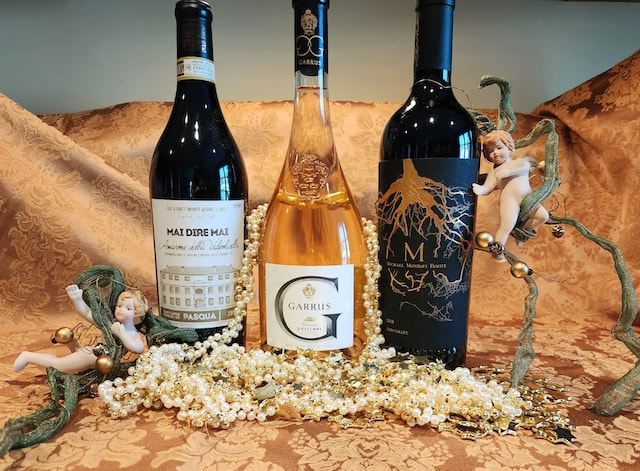
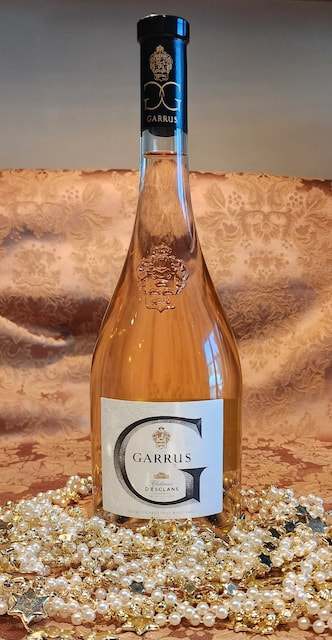
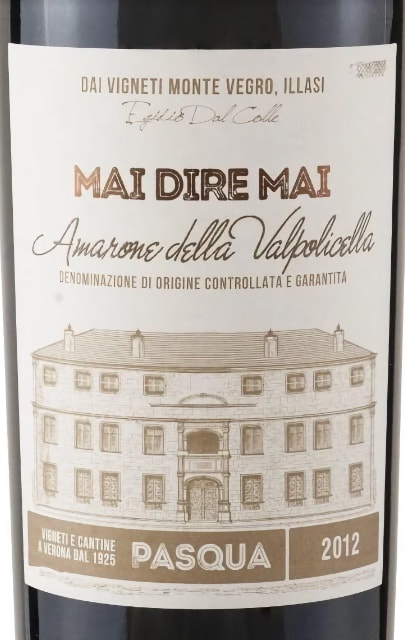

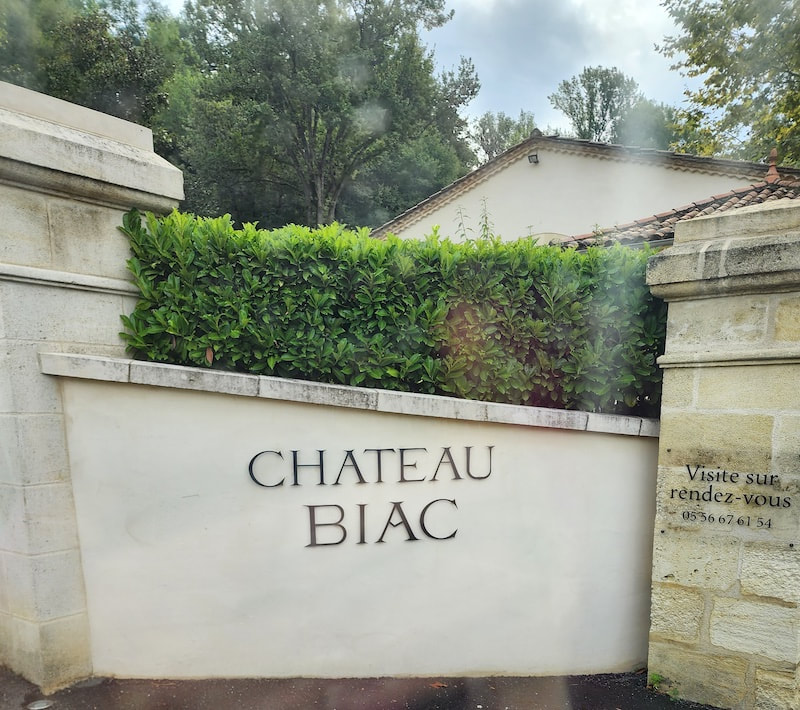
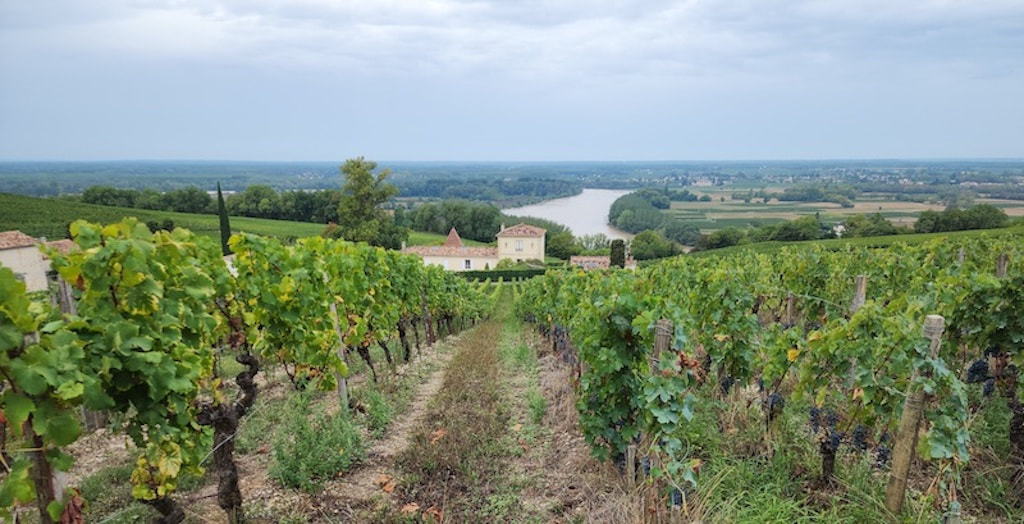

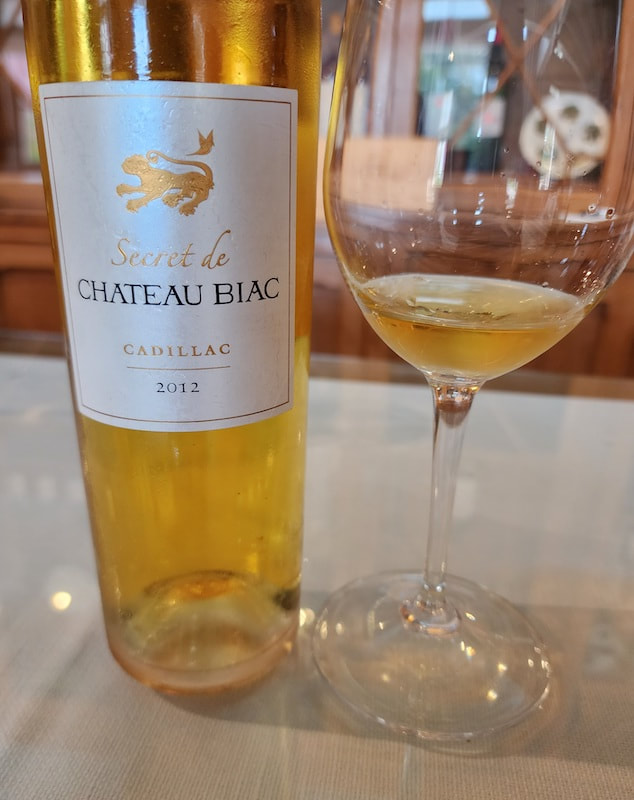
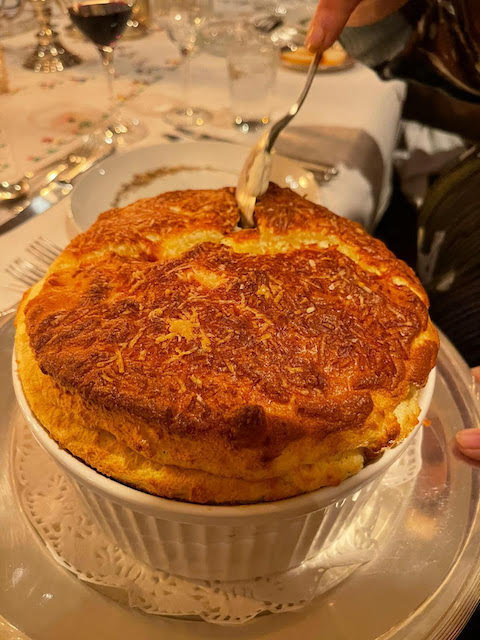
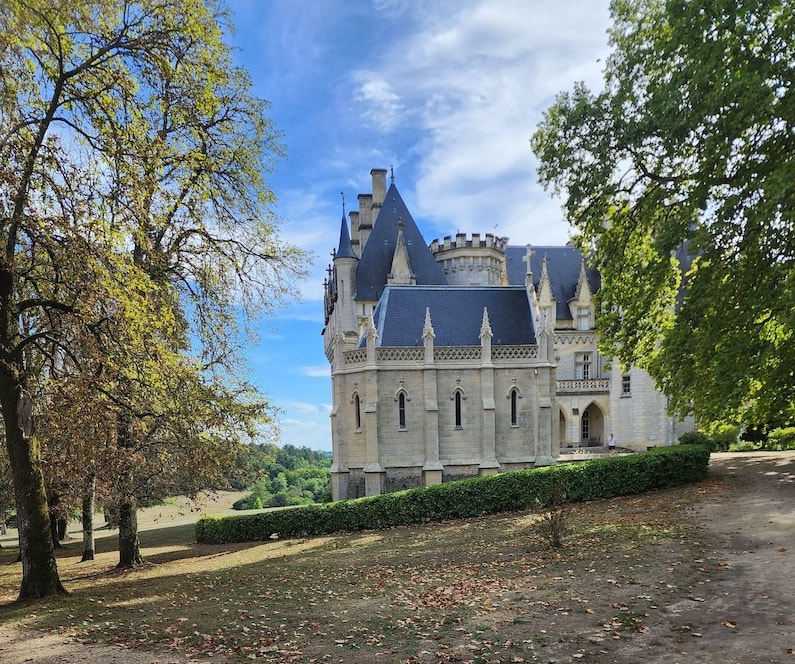
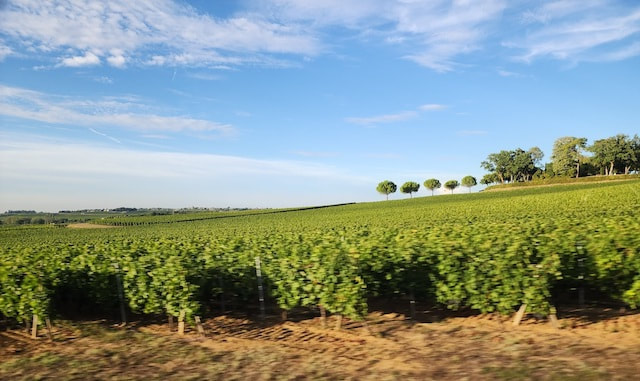
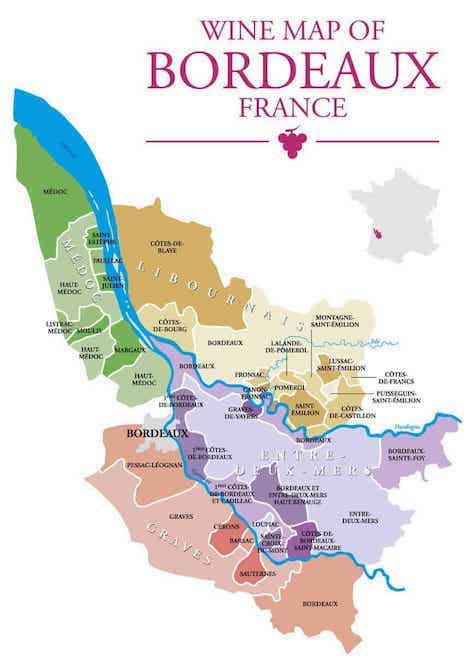
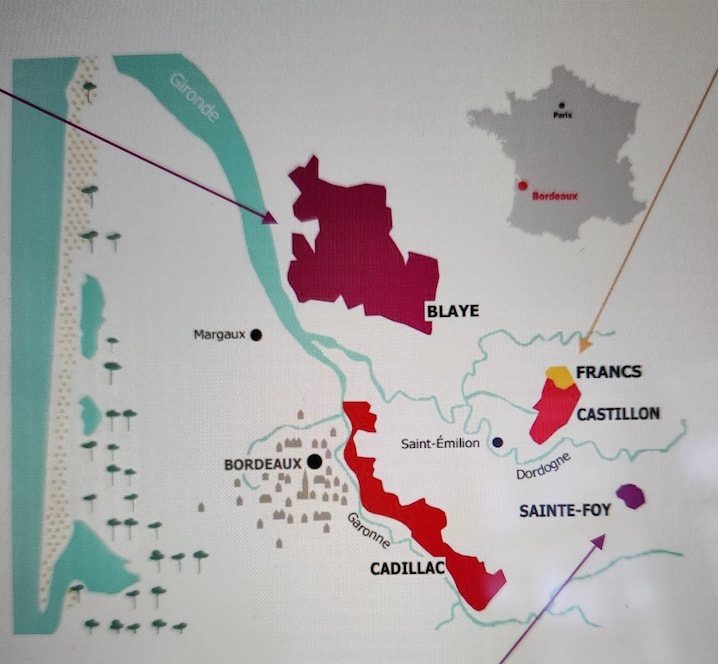
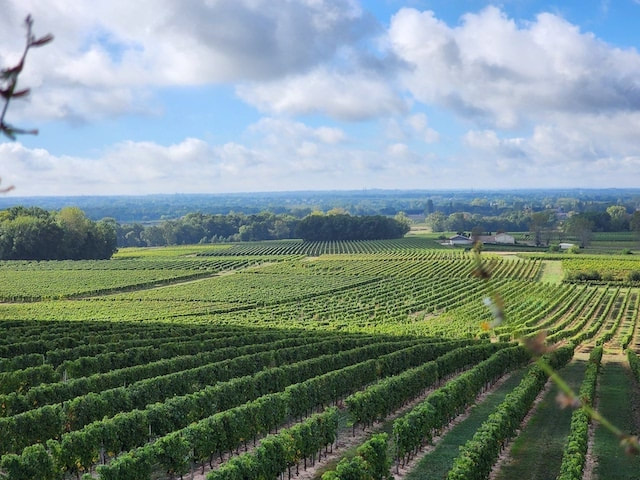
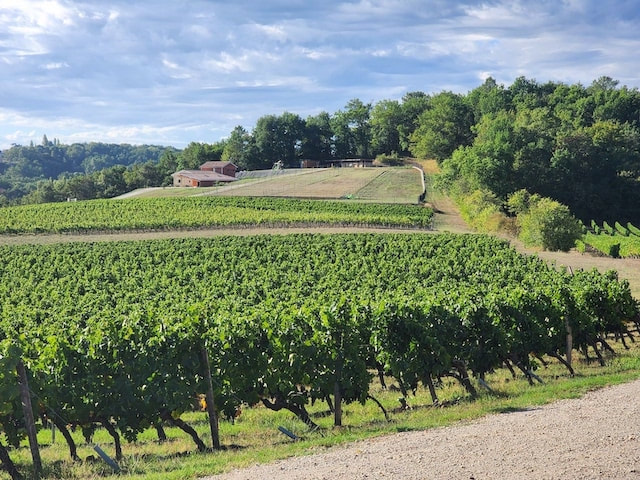
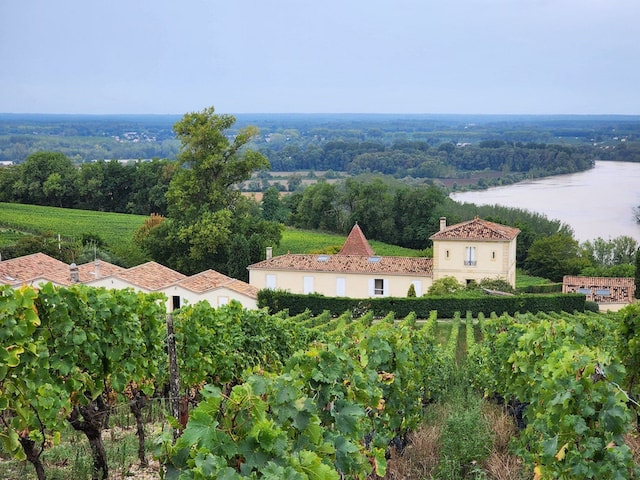
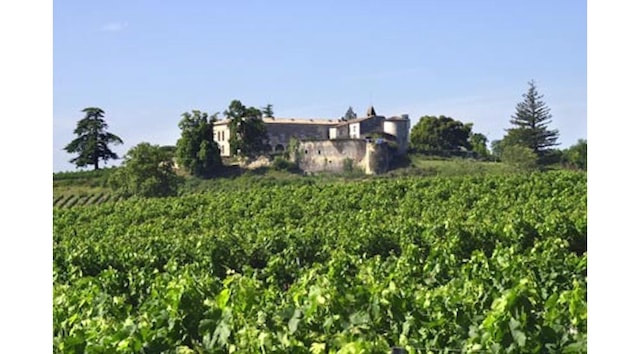
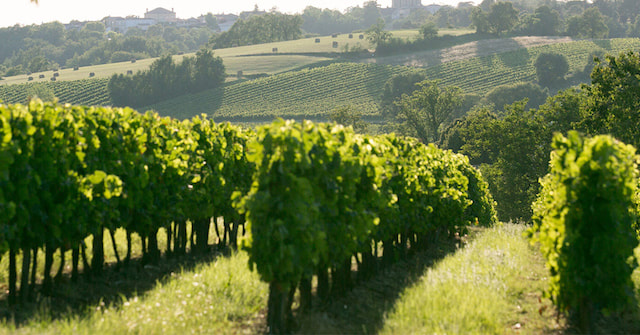
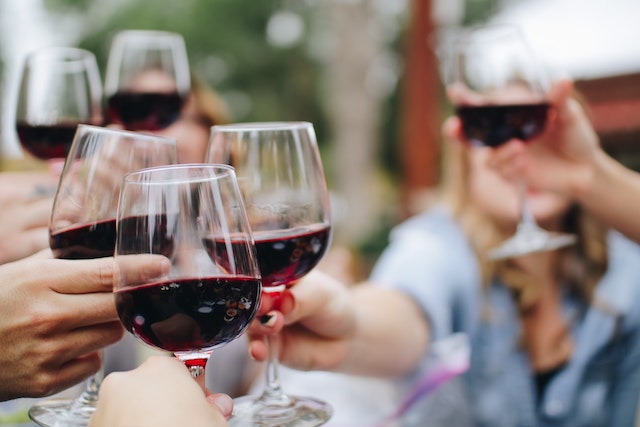
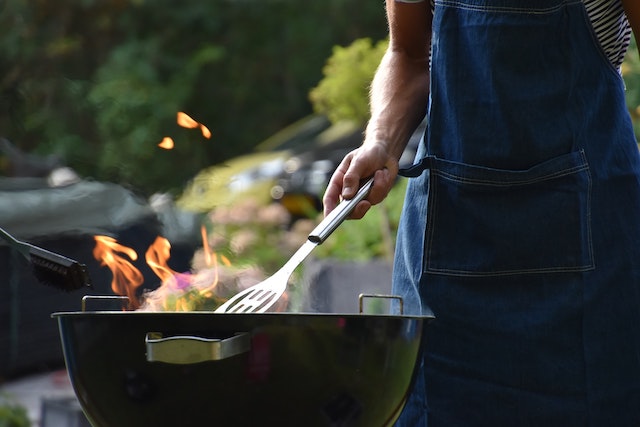
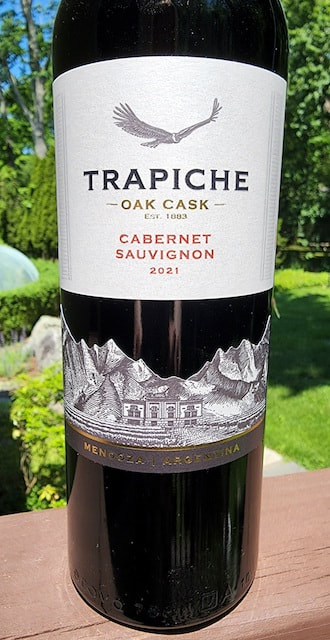
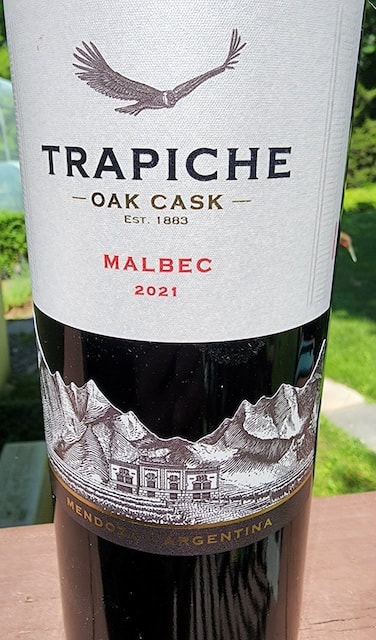
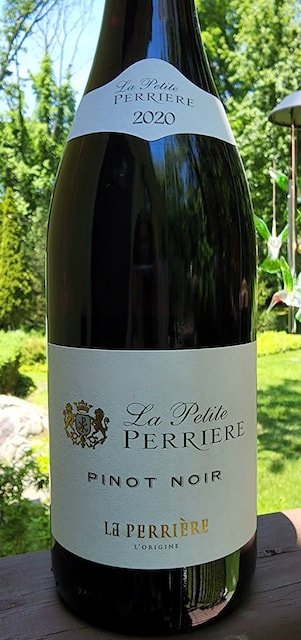
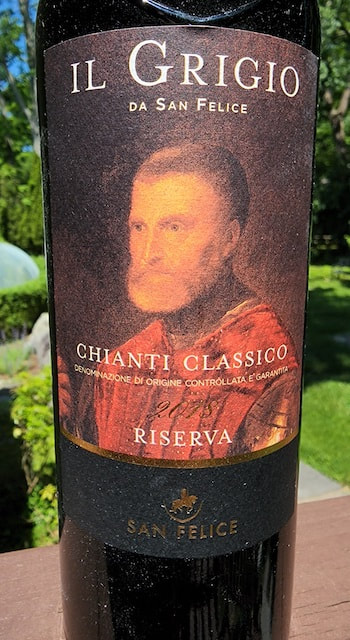
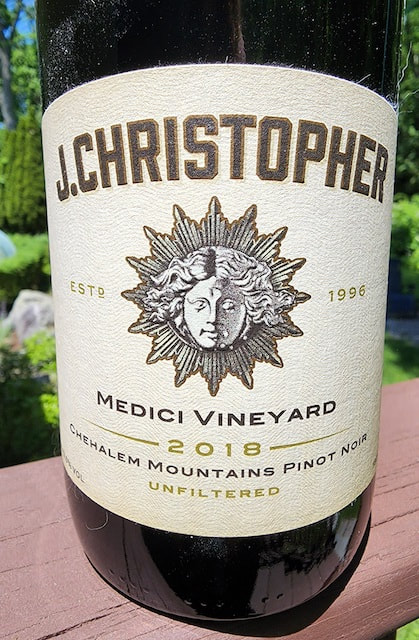
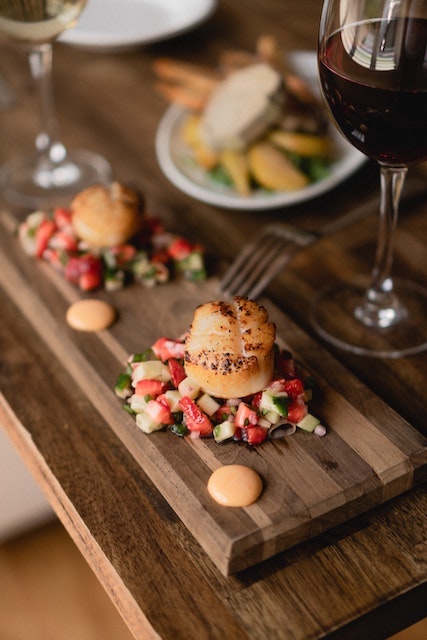
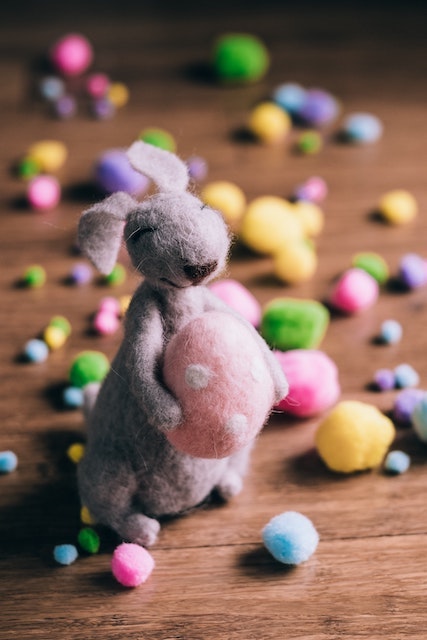
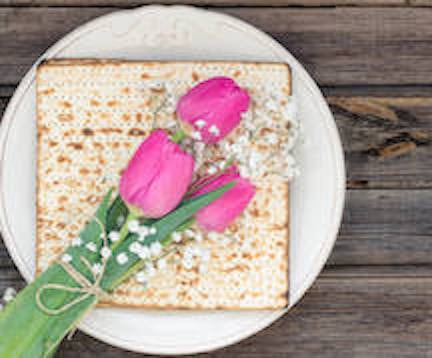
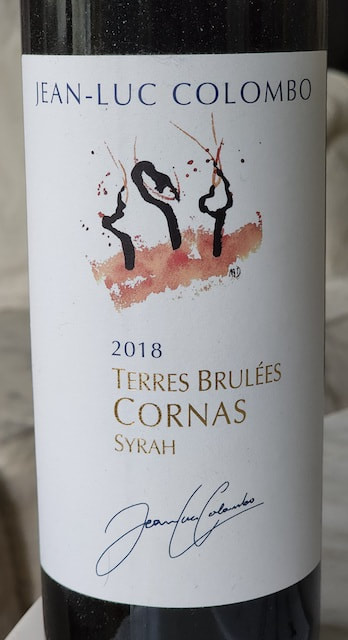
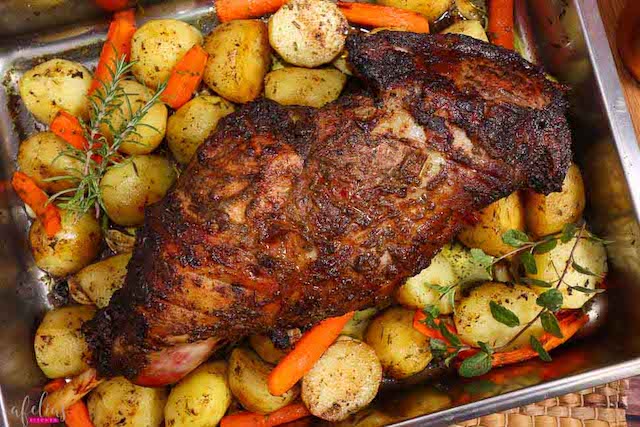
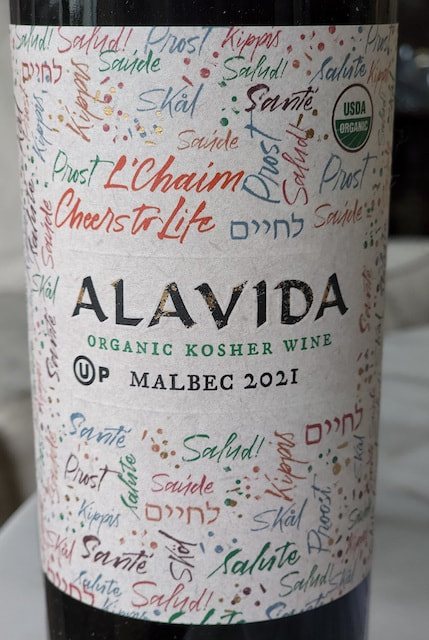
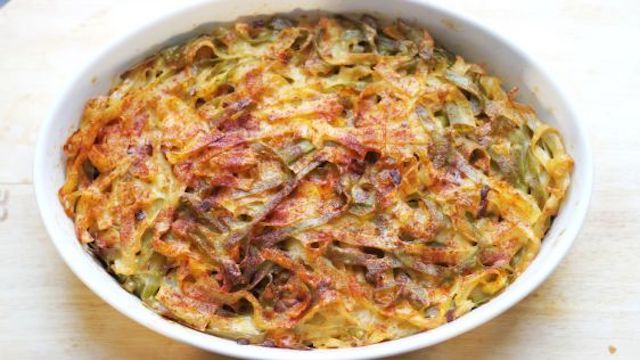
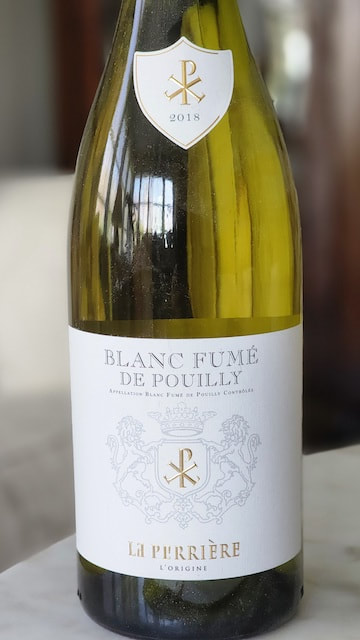
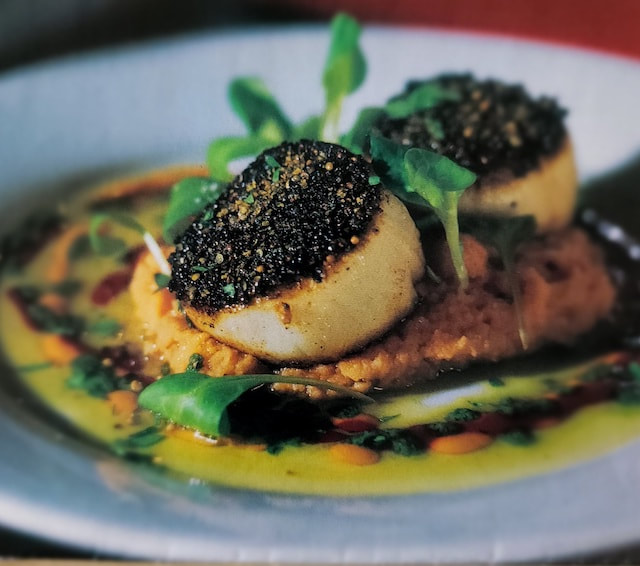
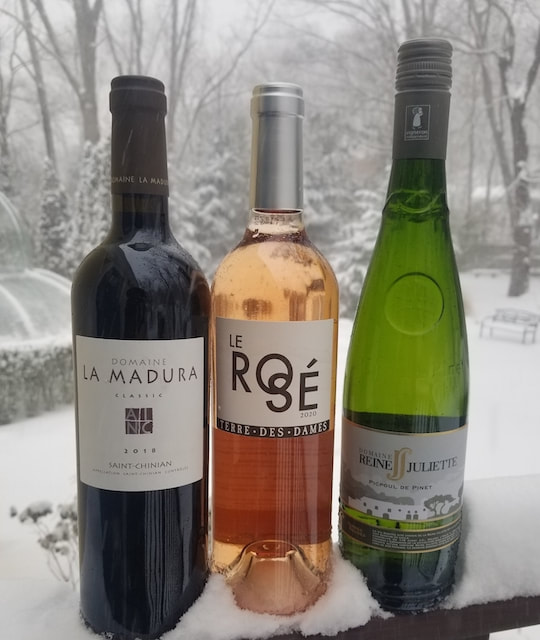
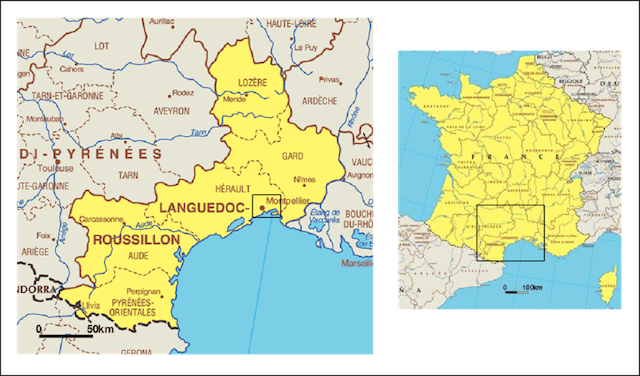
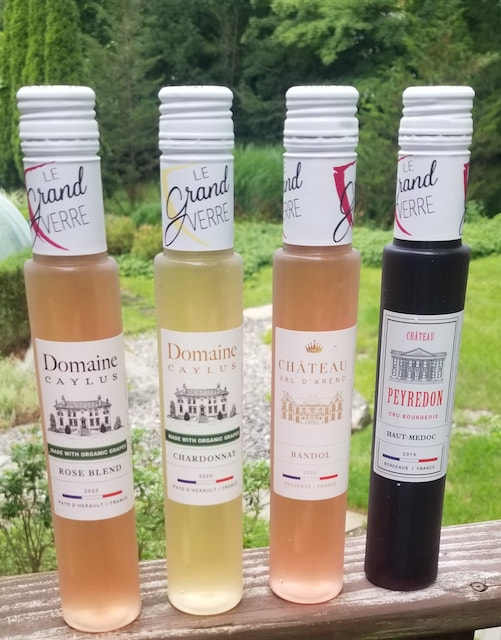
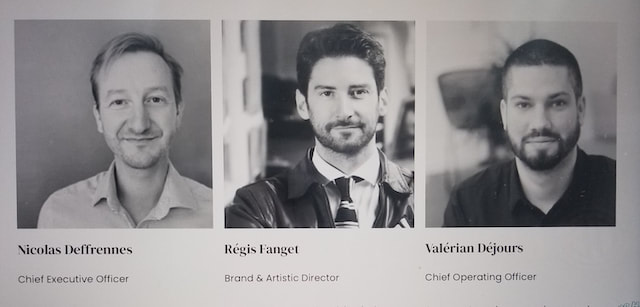
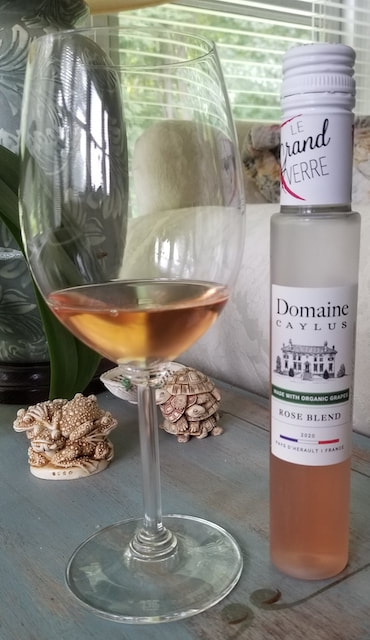
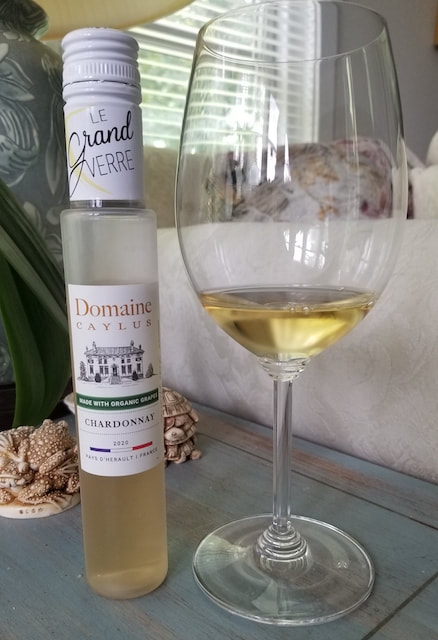
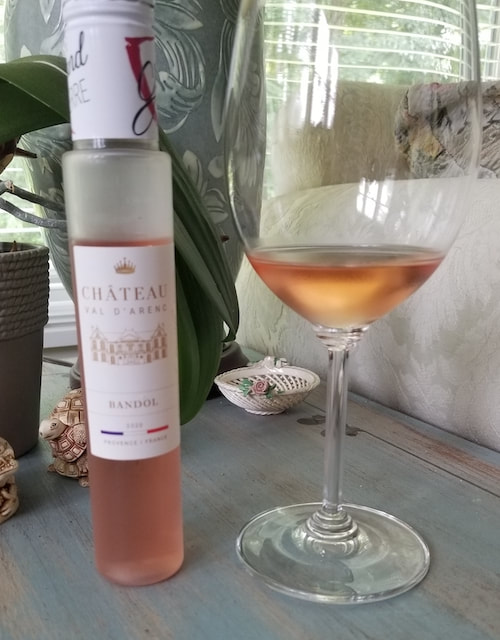
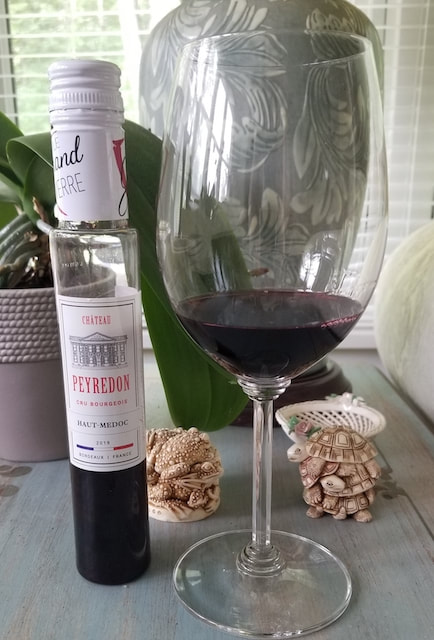
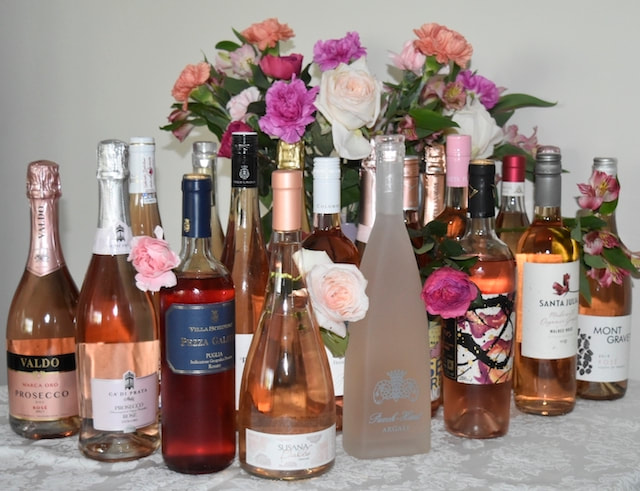
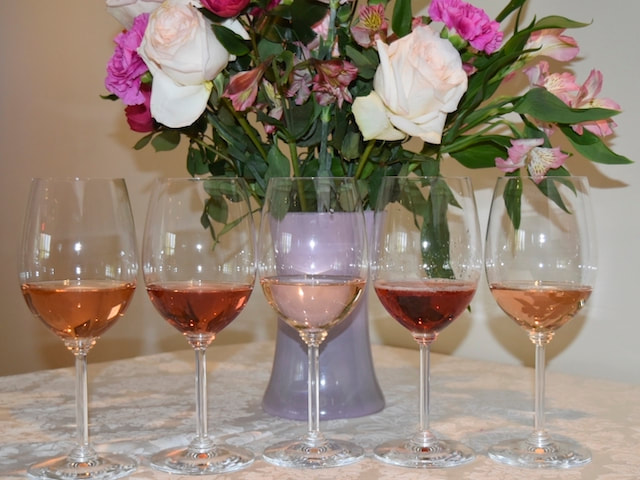
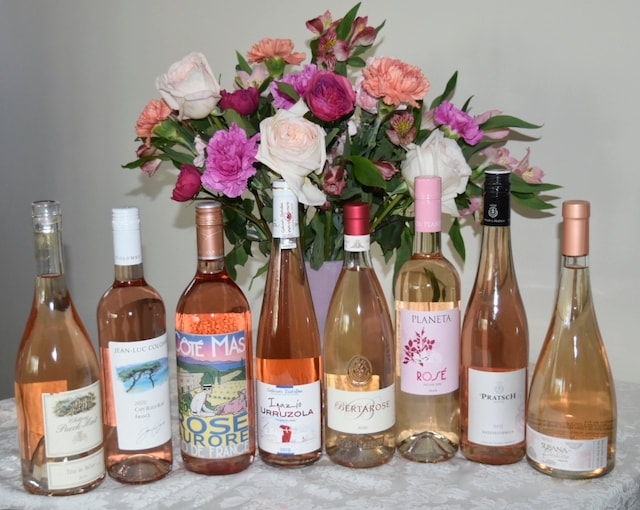
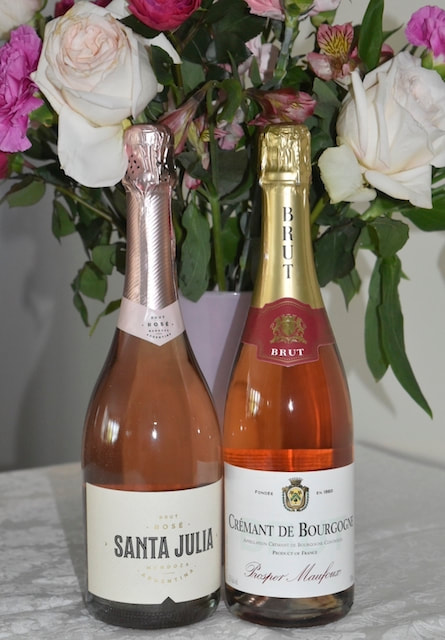
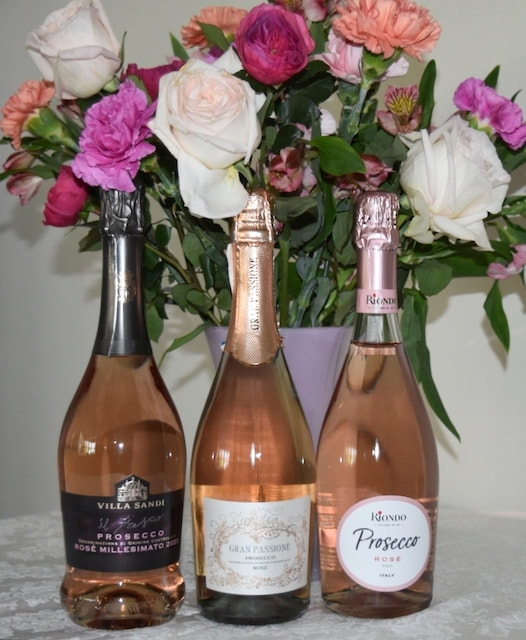
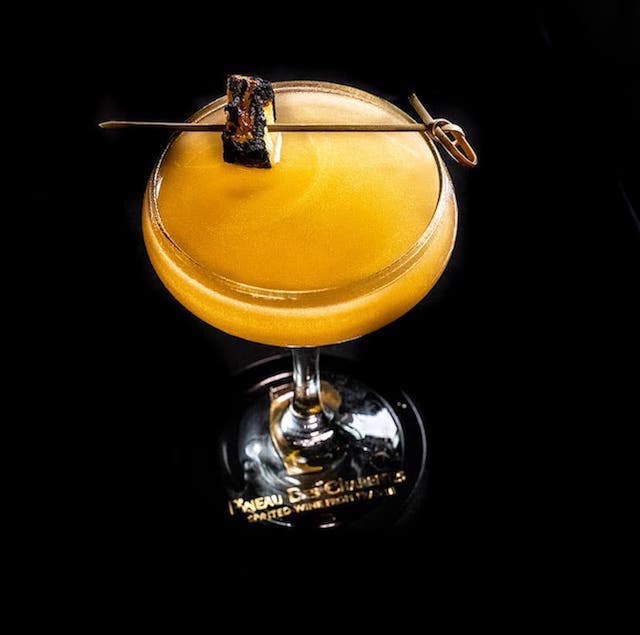
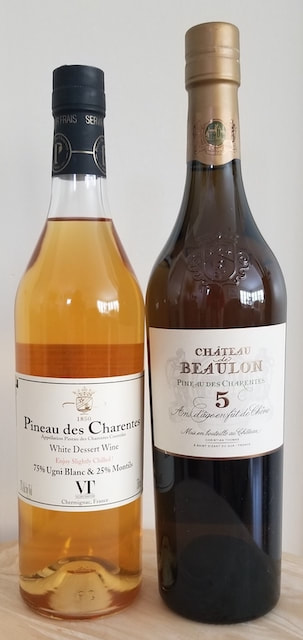
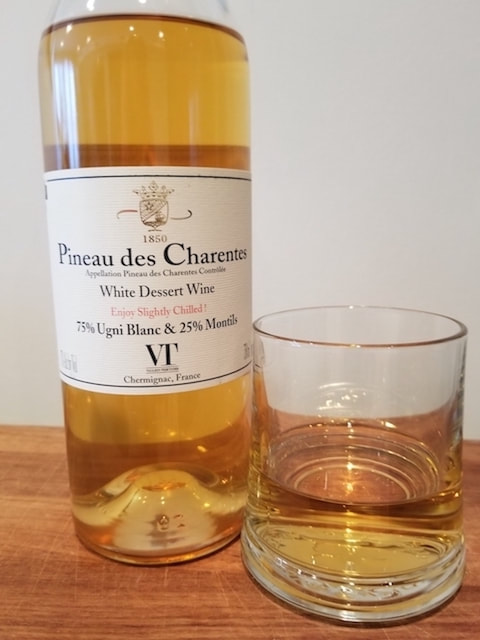
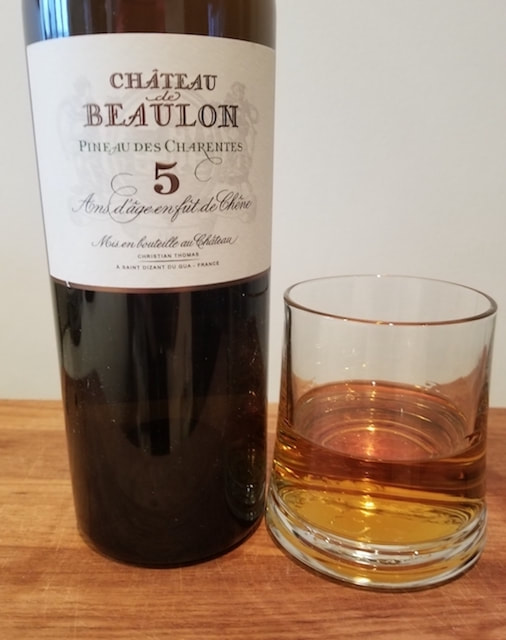
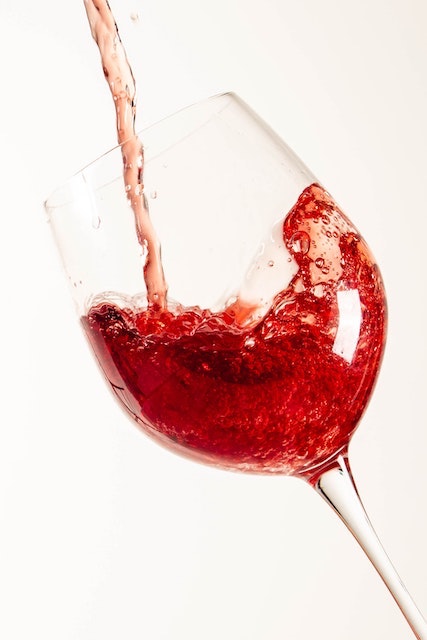
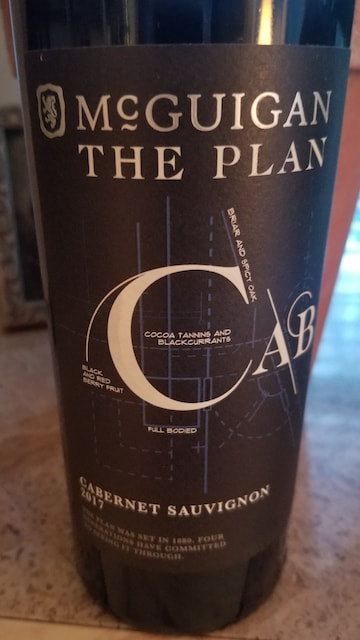
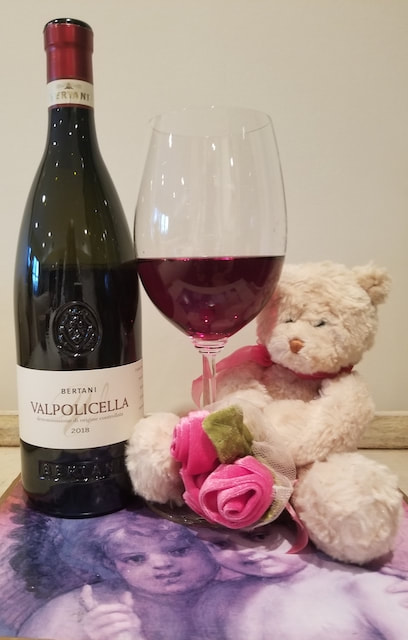
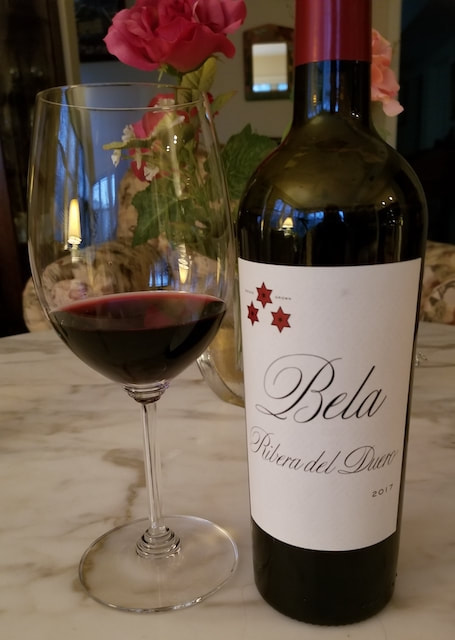
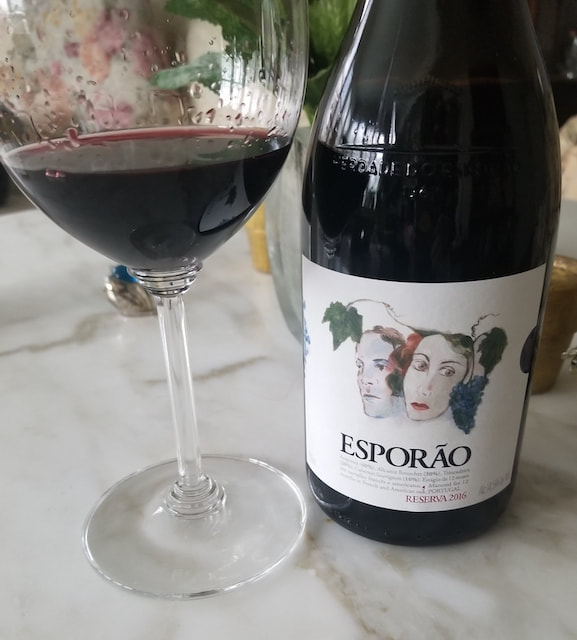
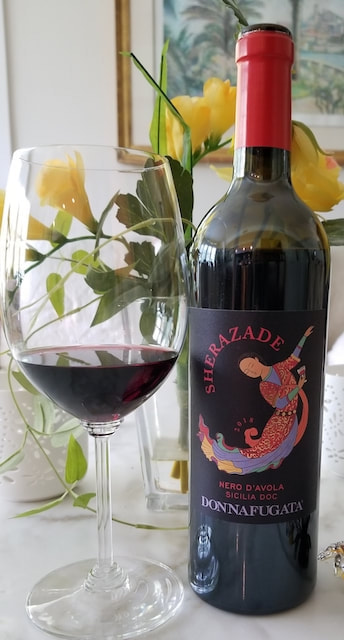
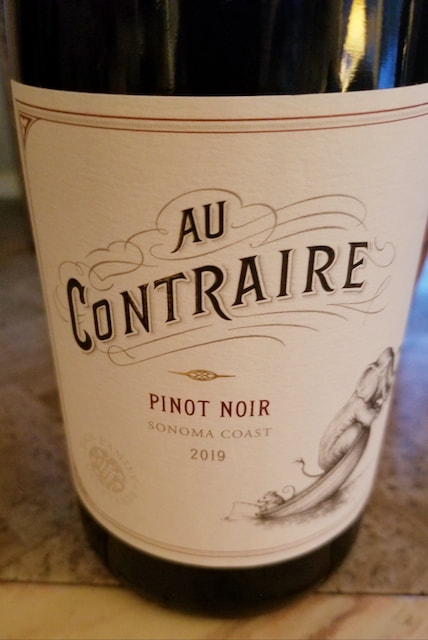
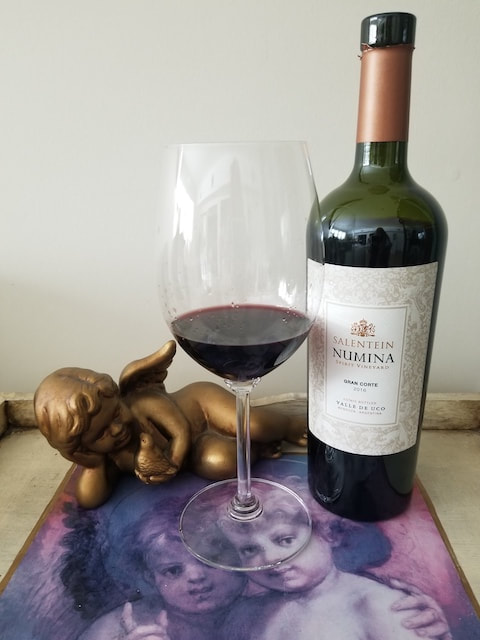
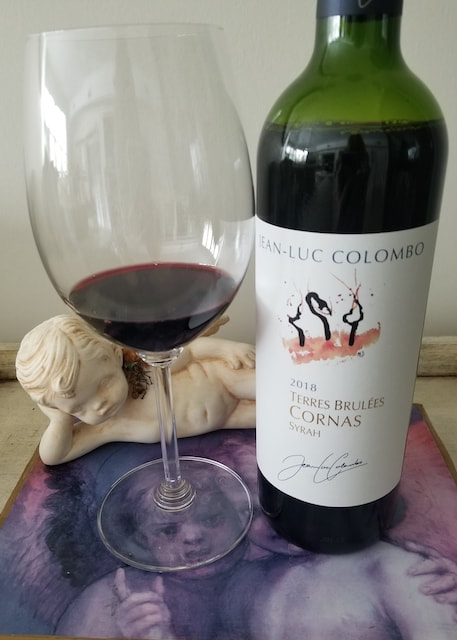
 RSS Feed
RSS Feed